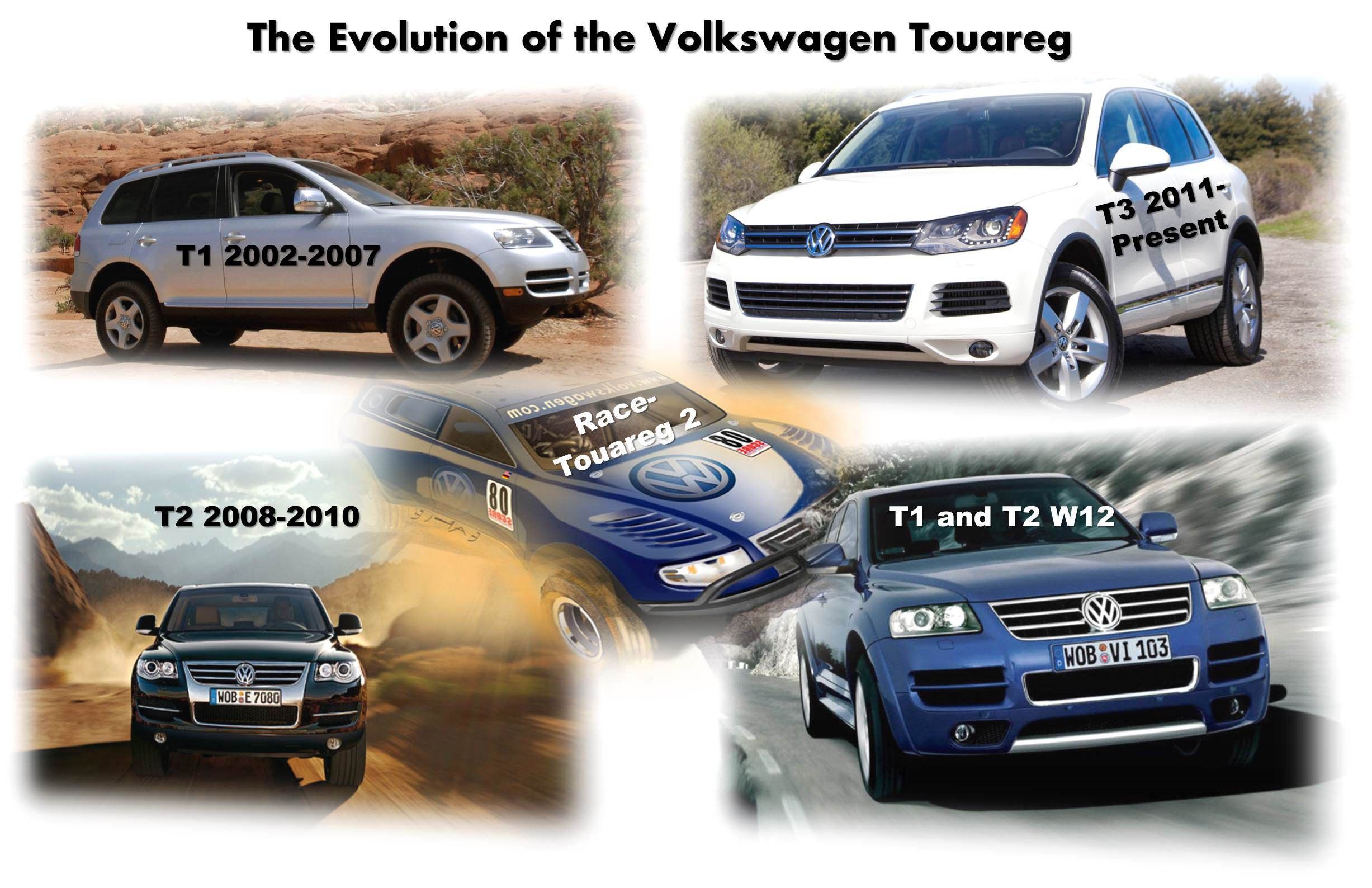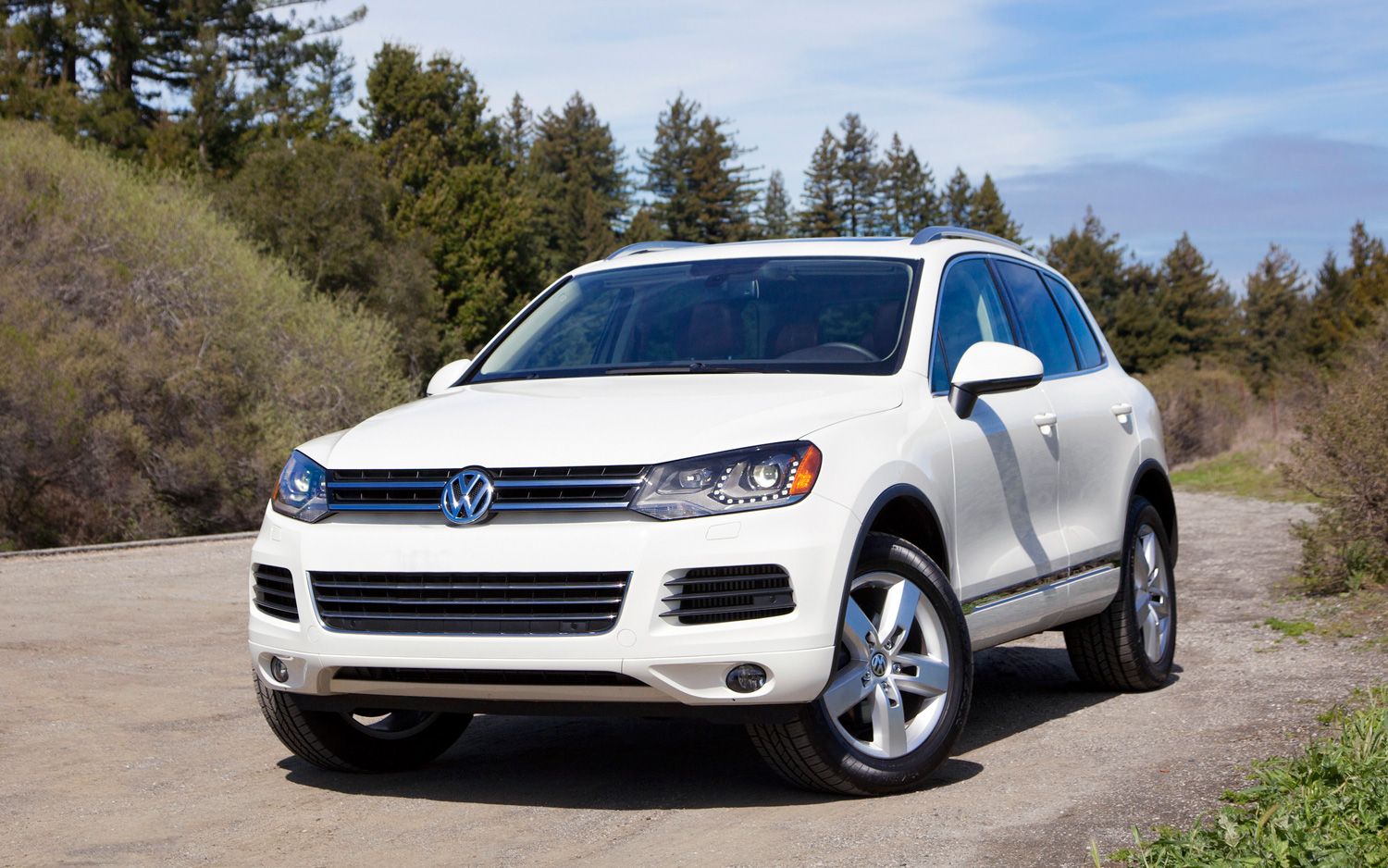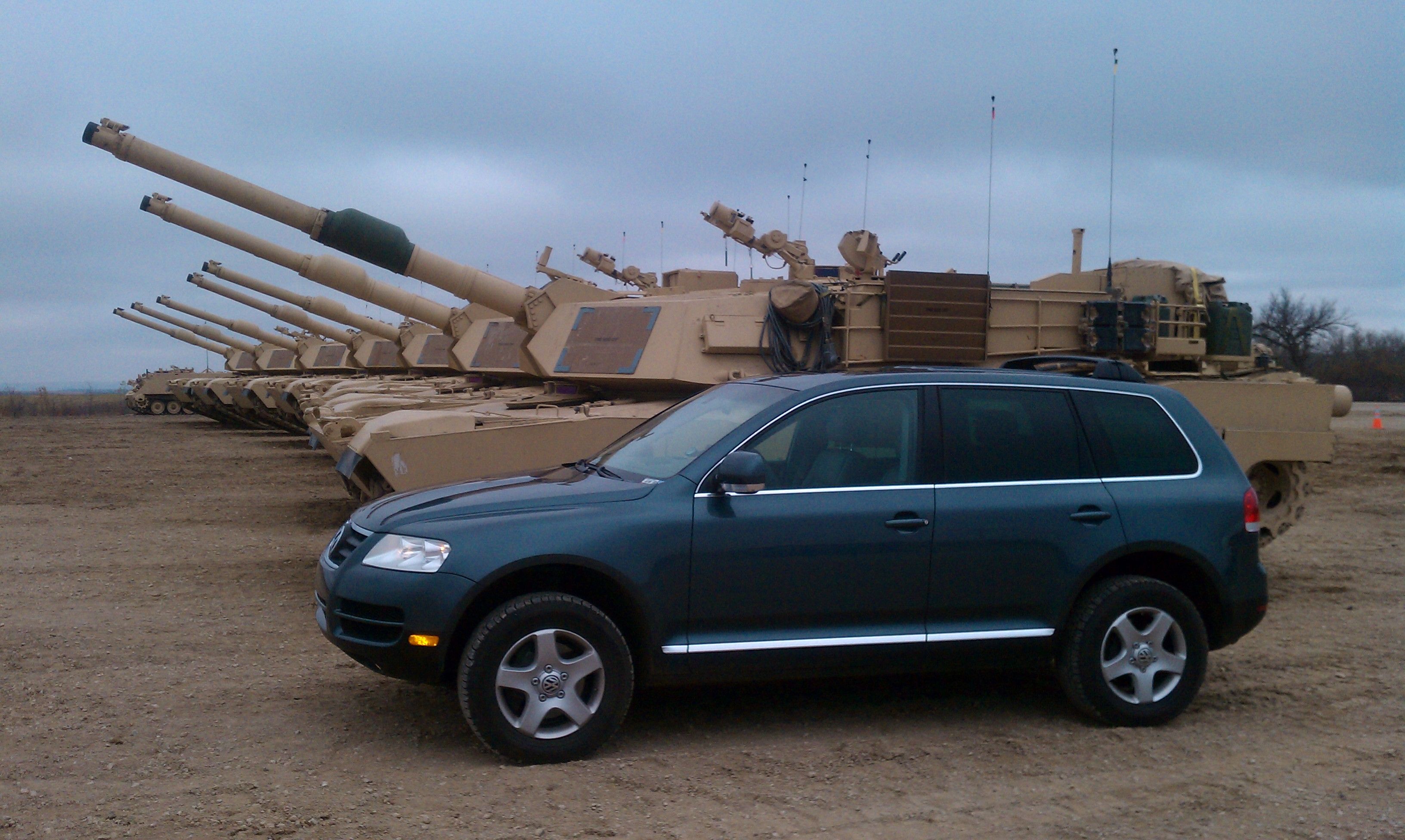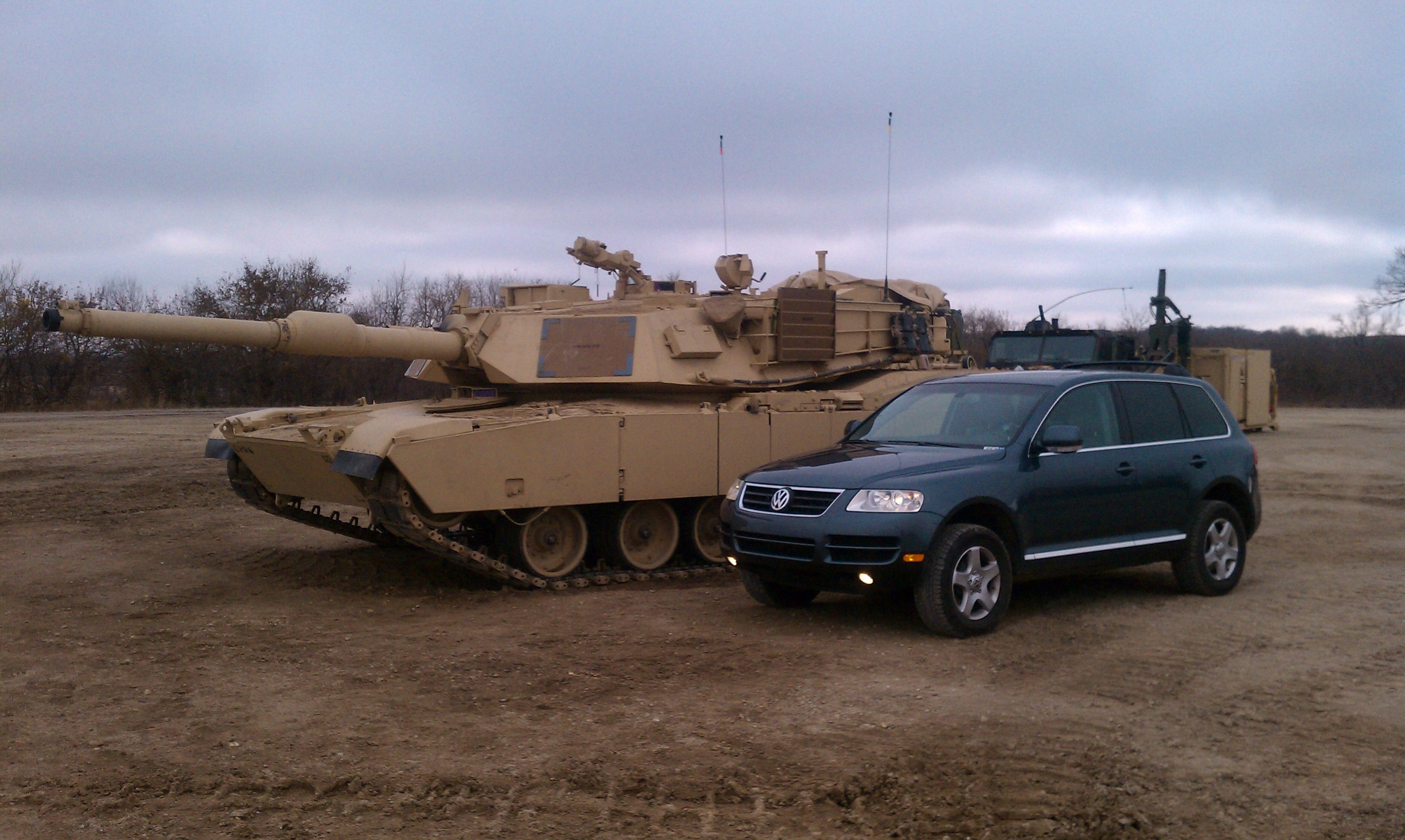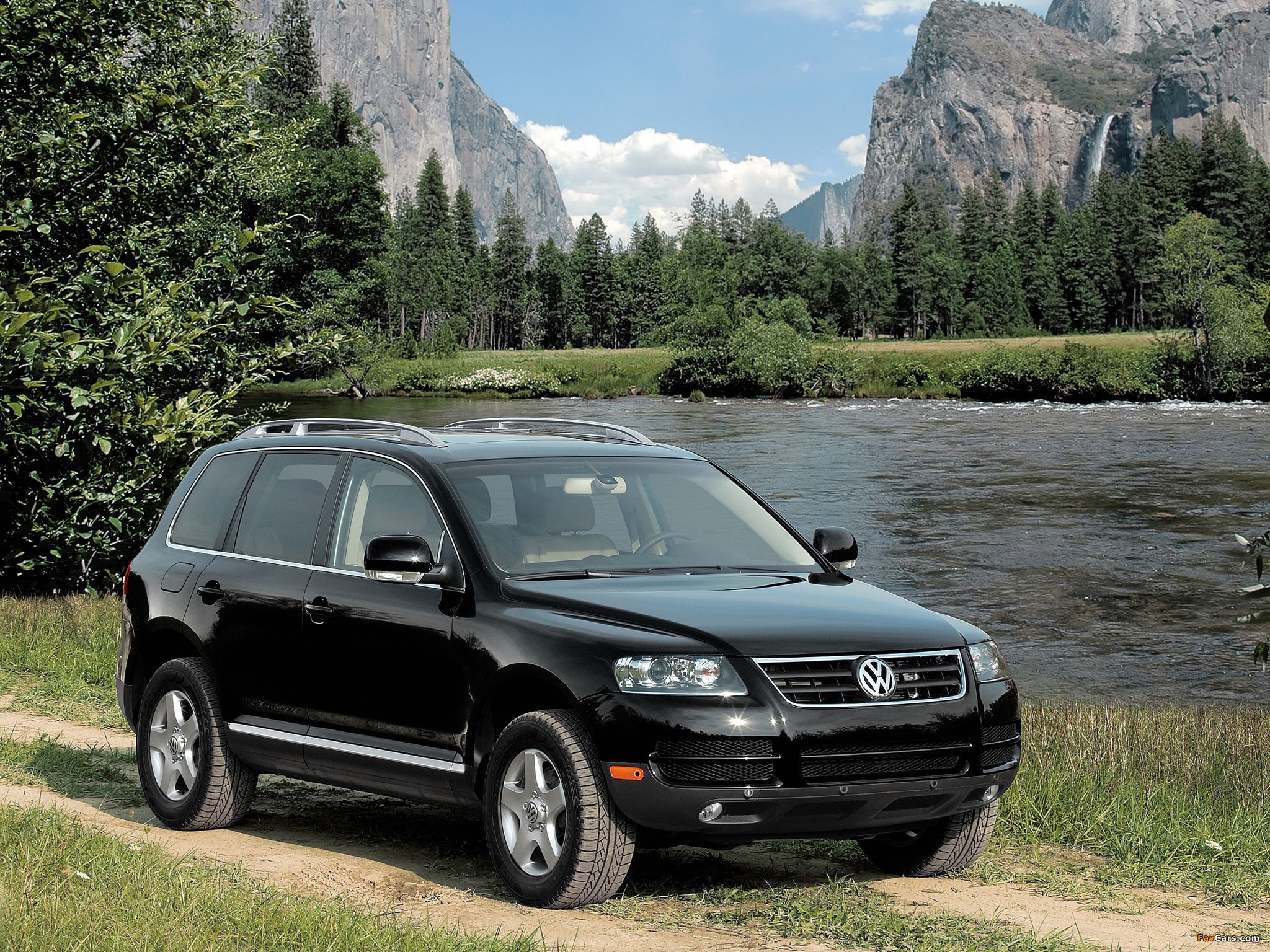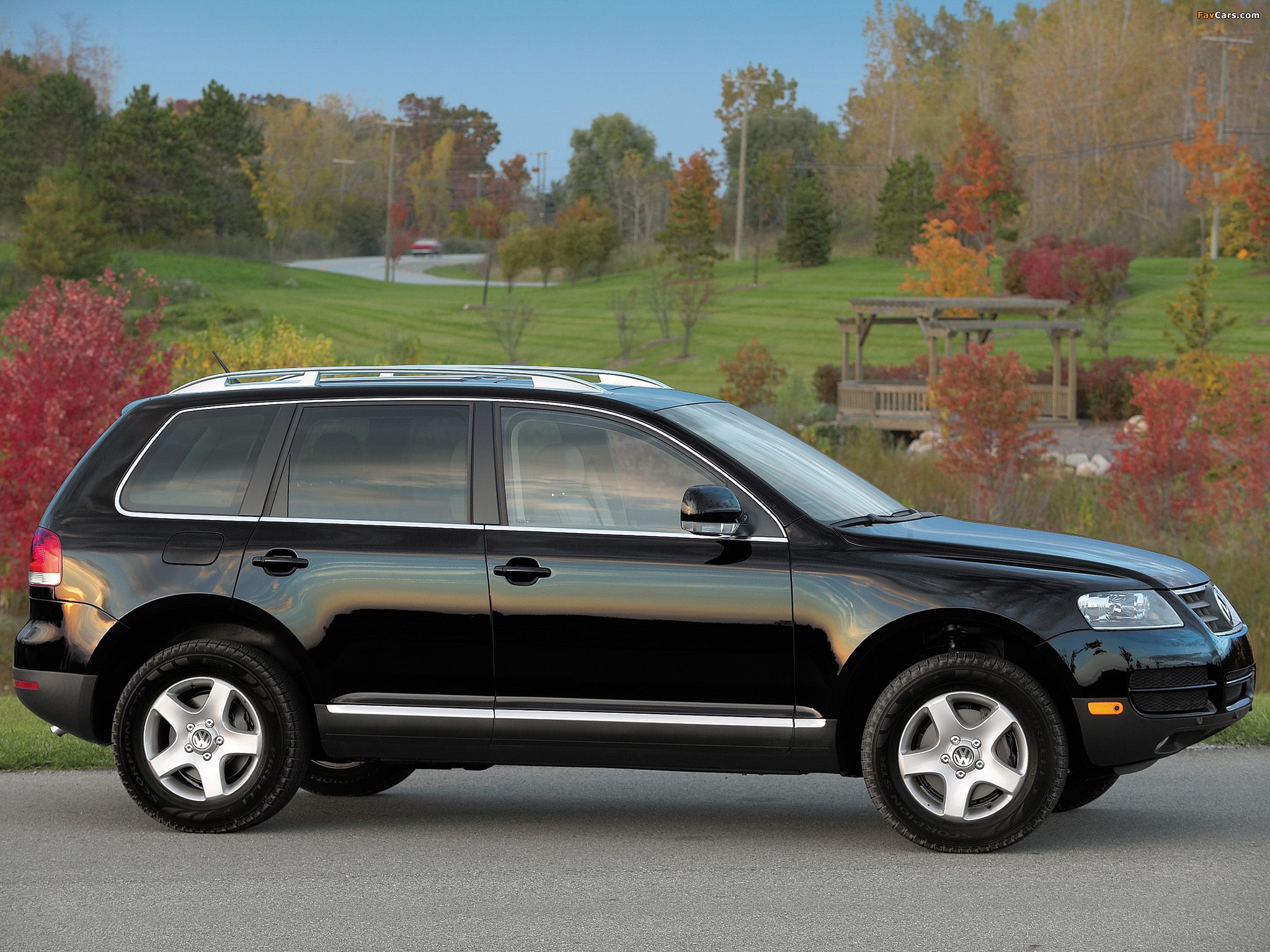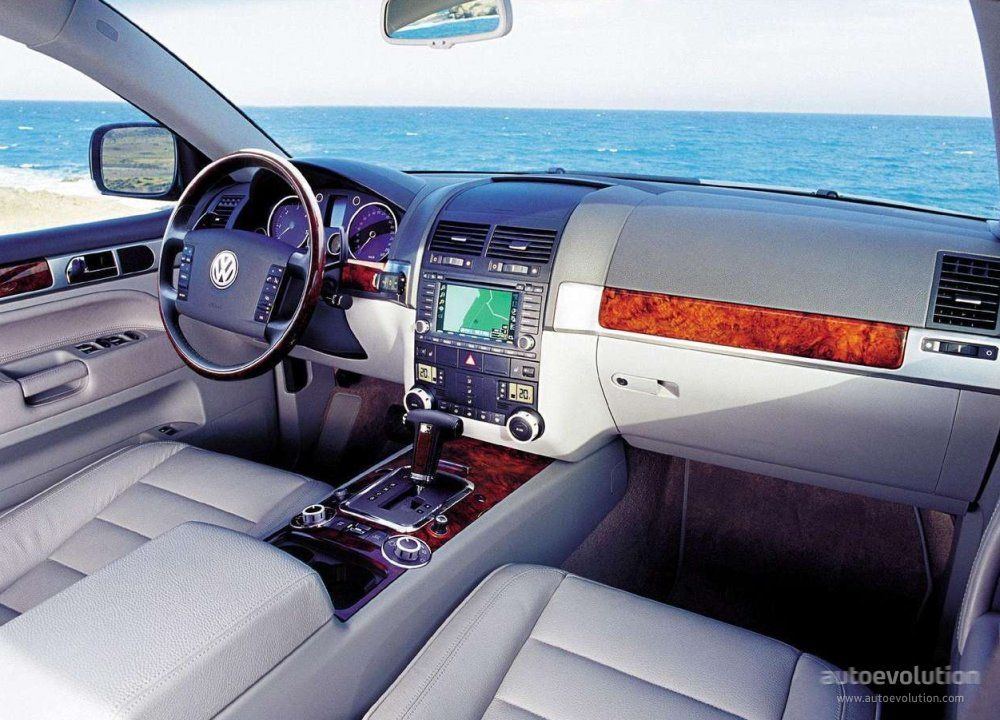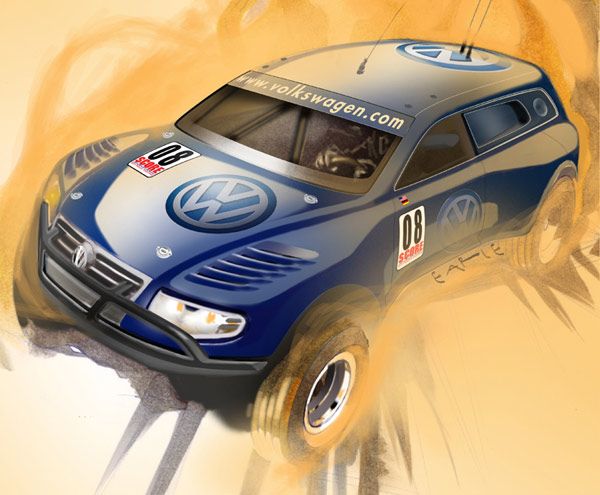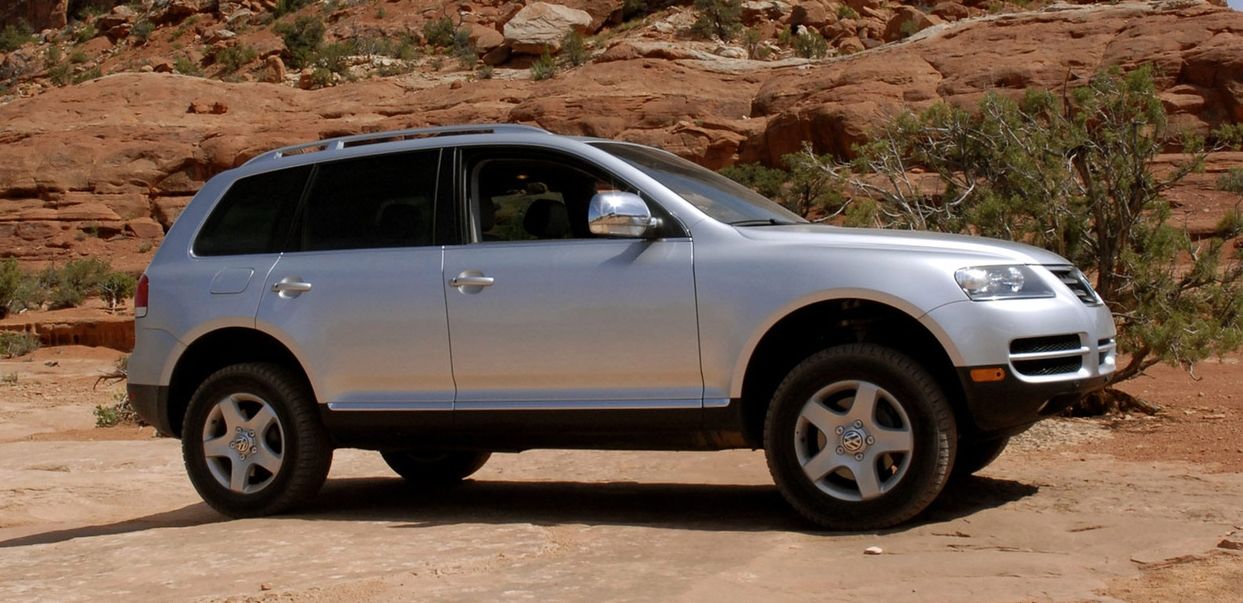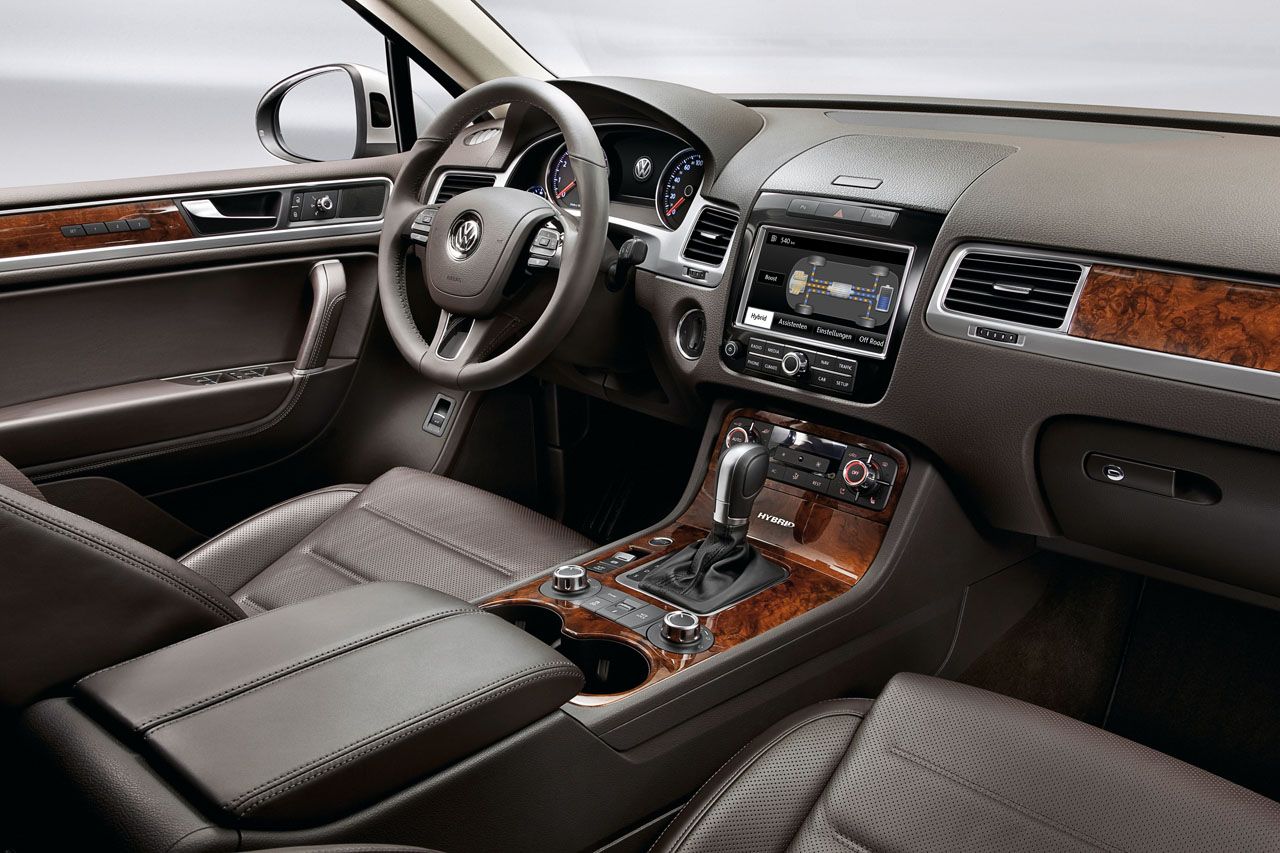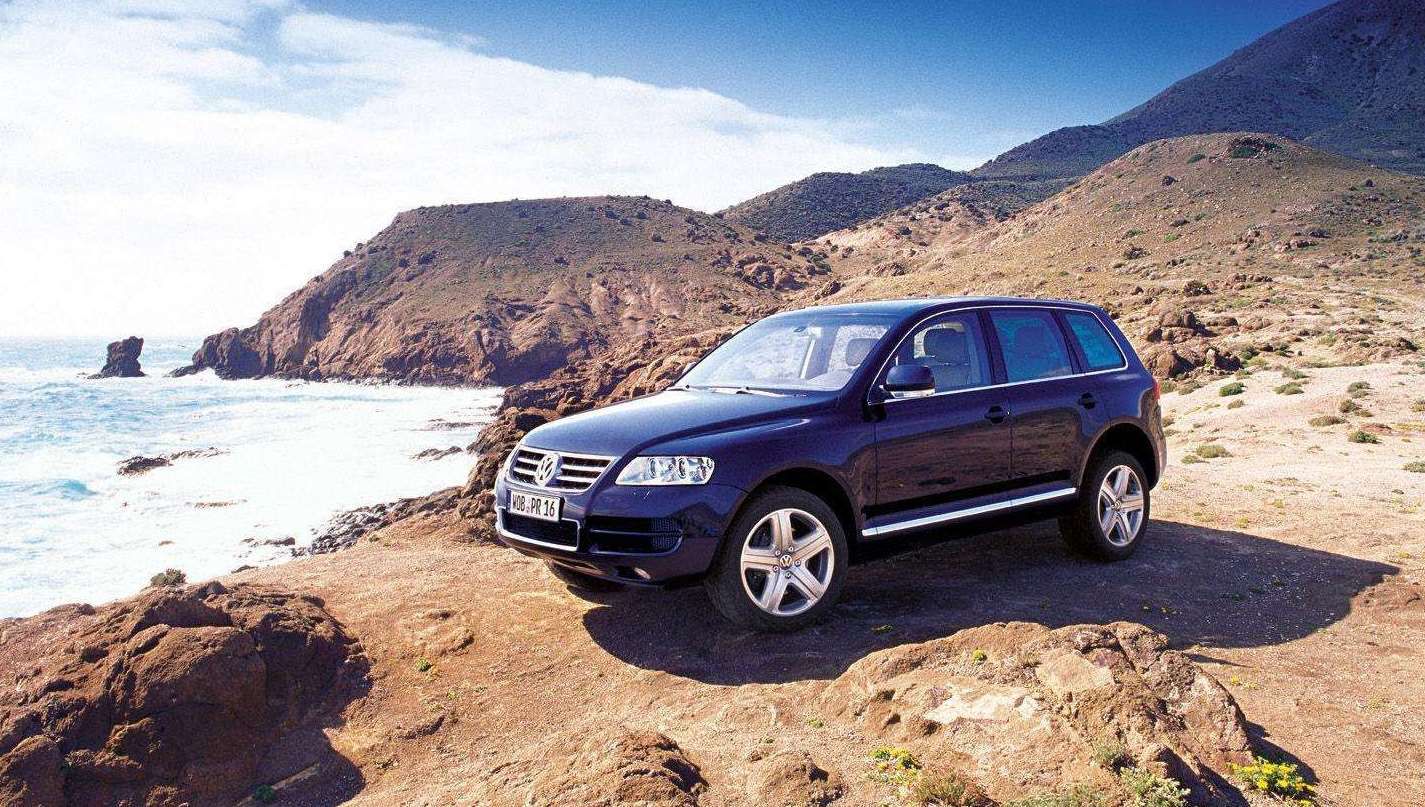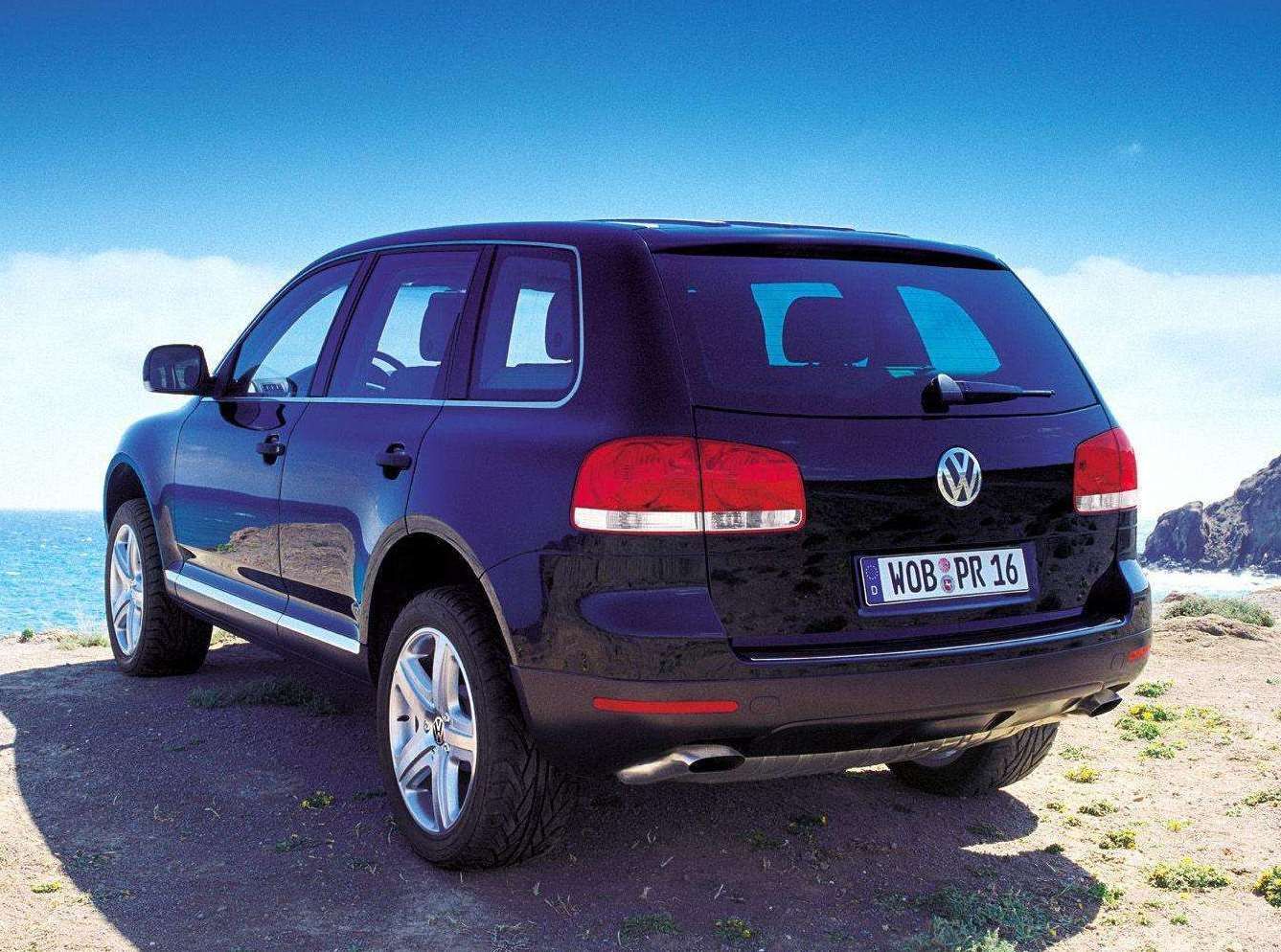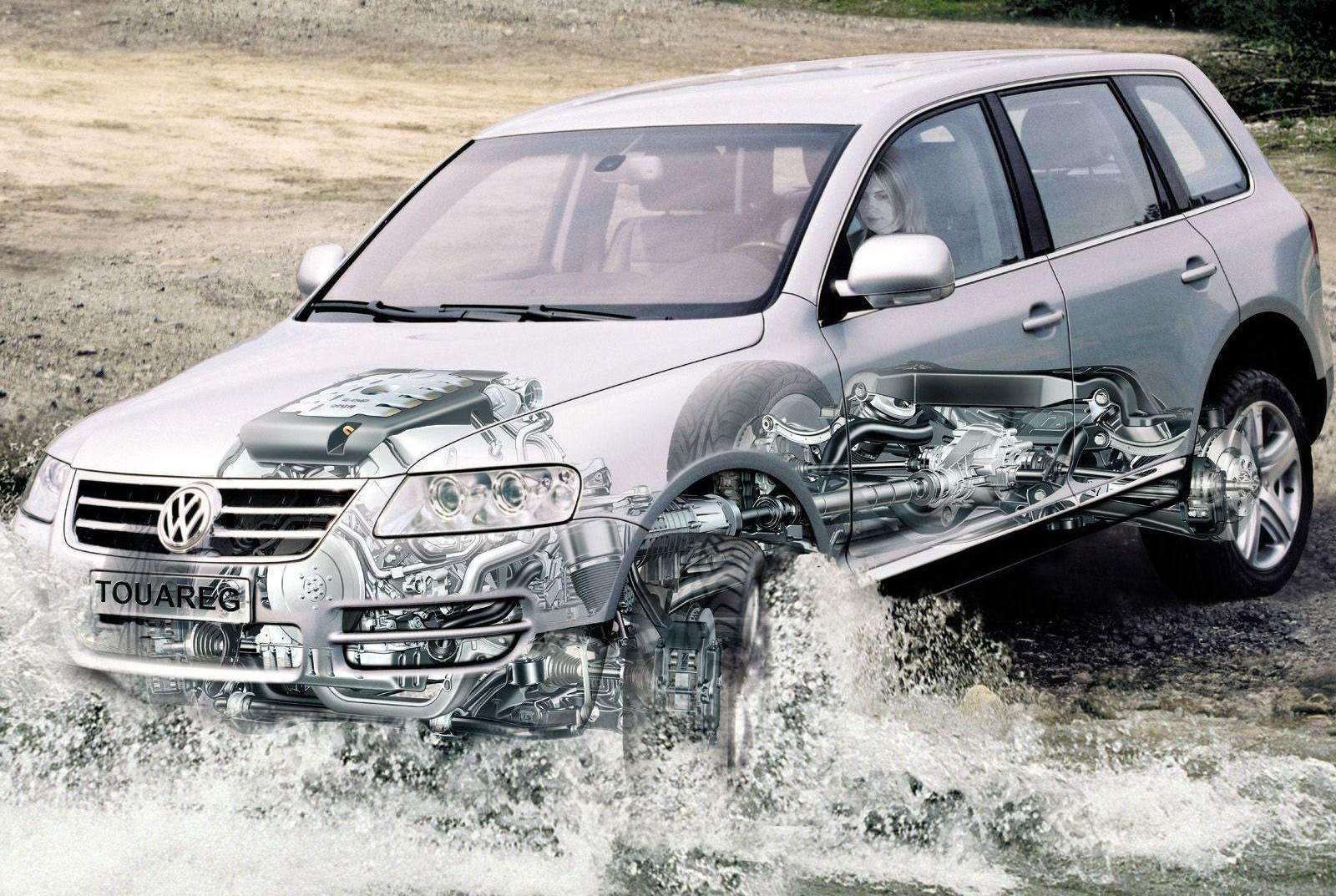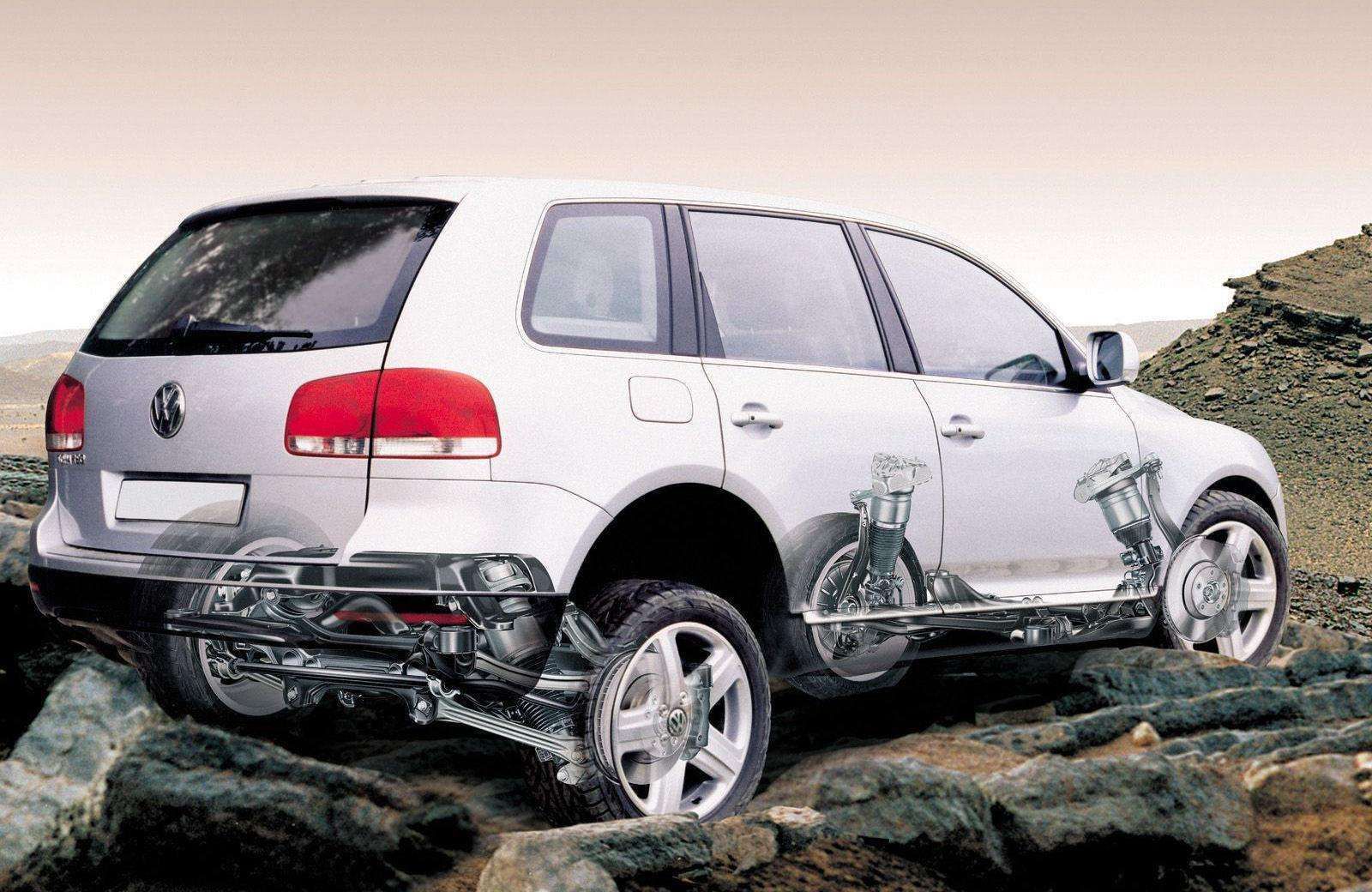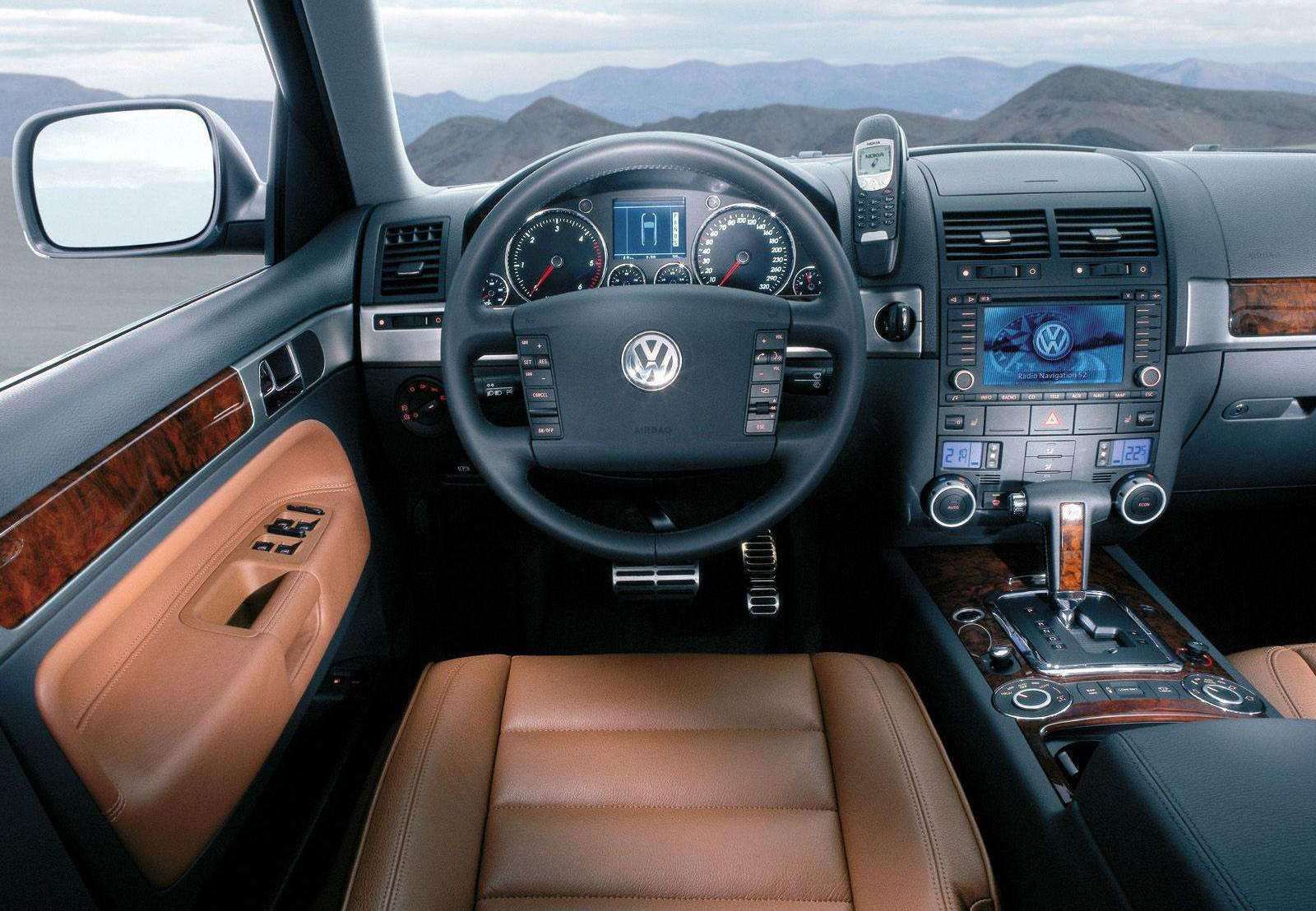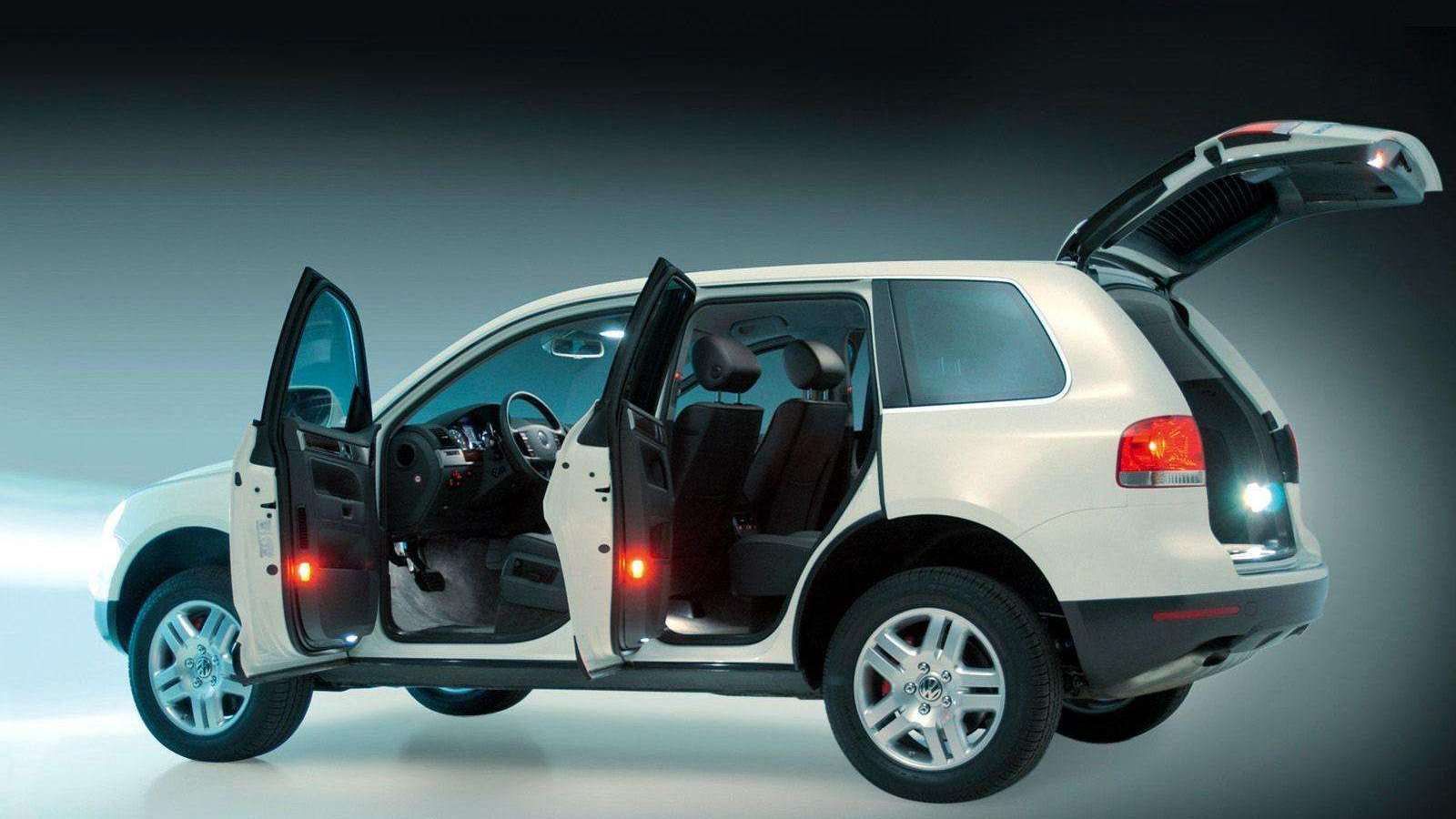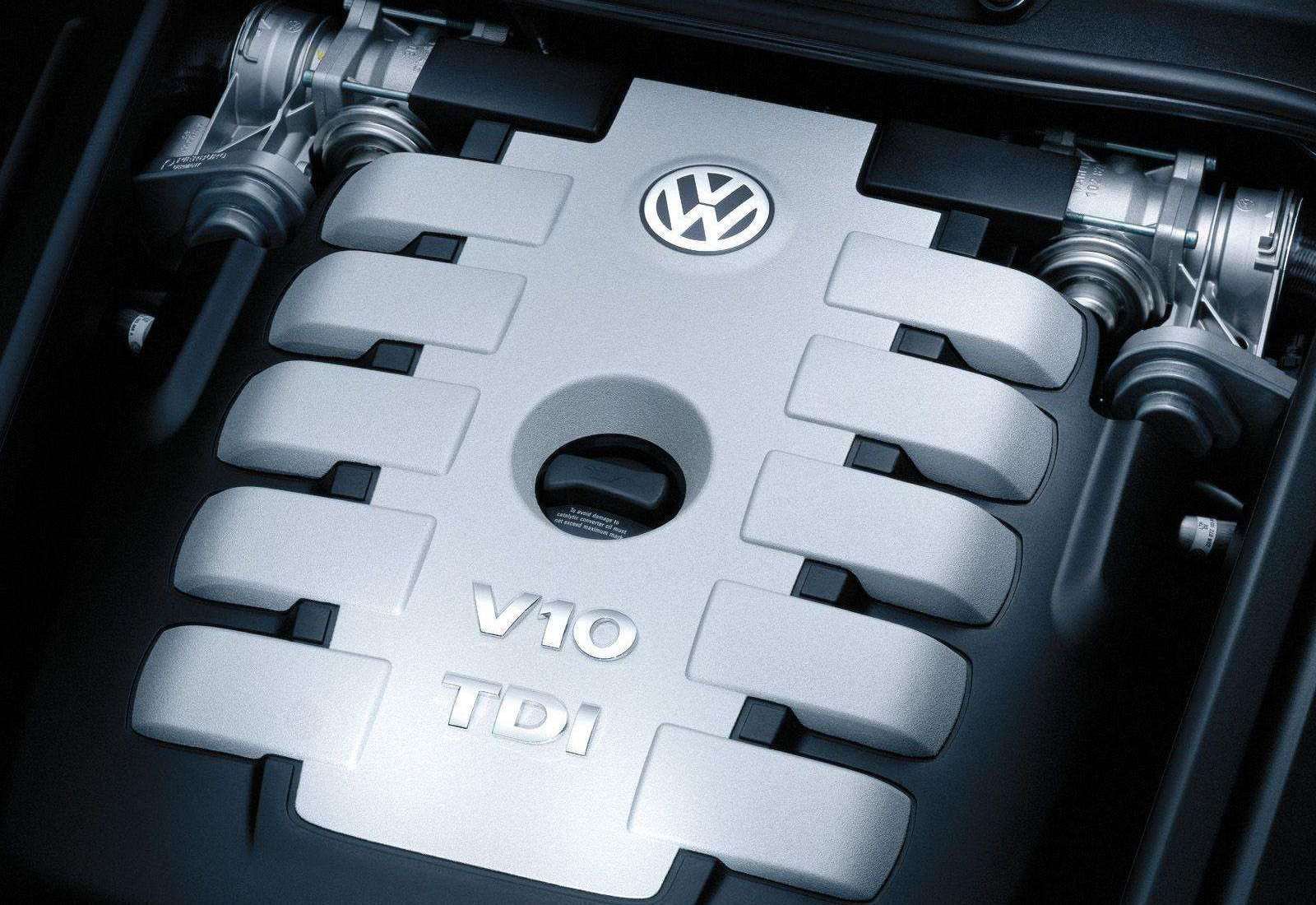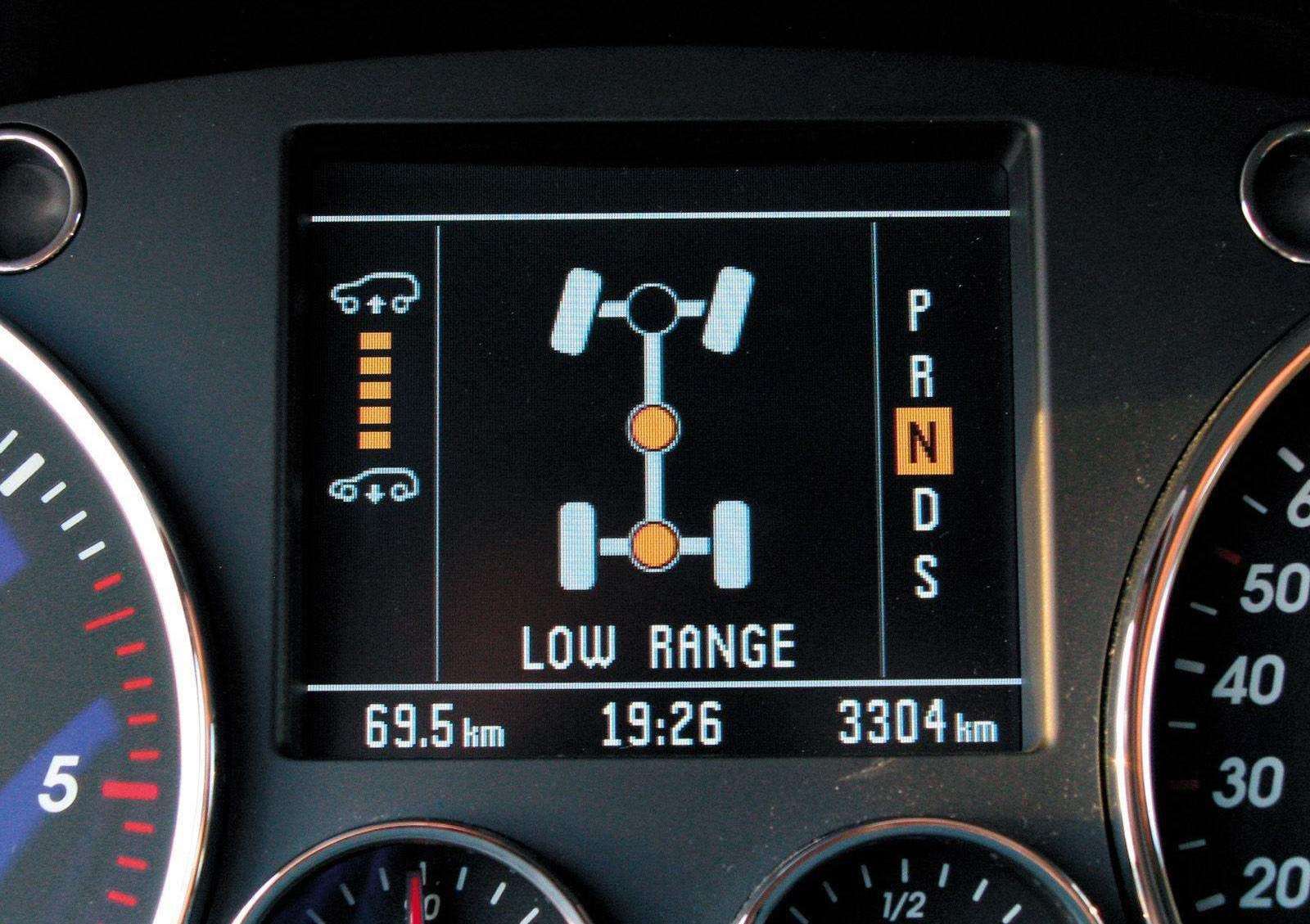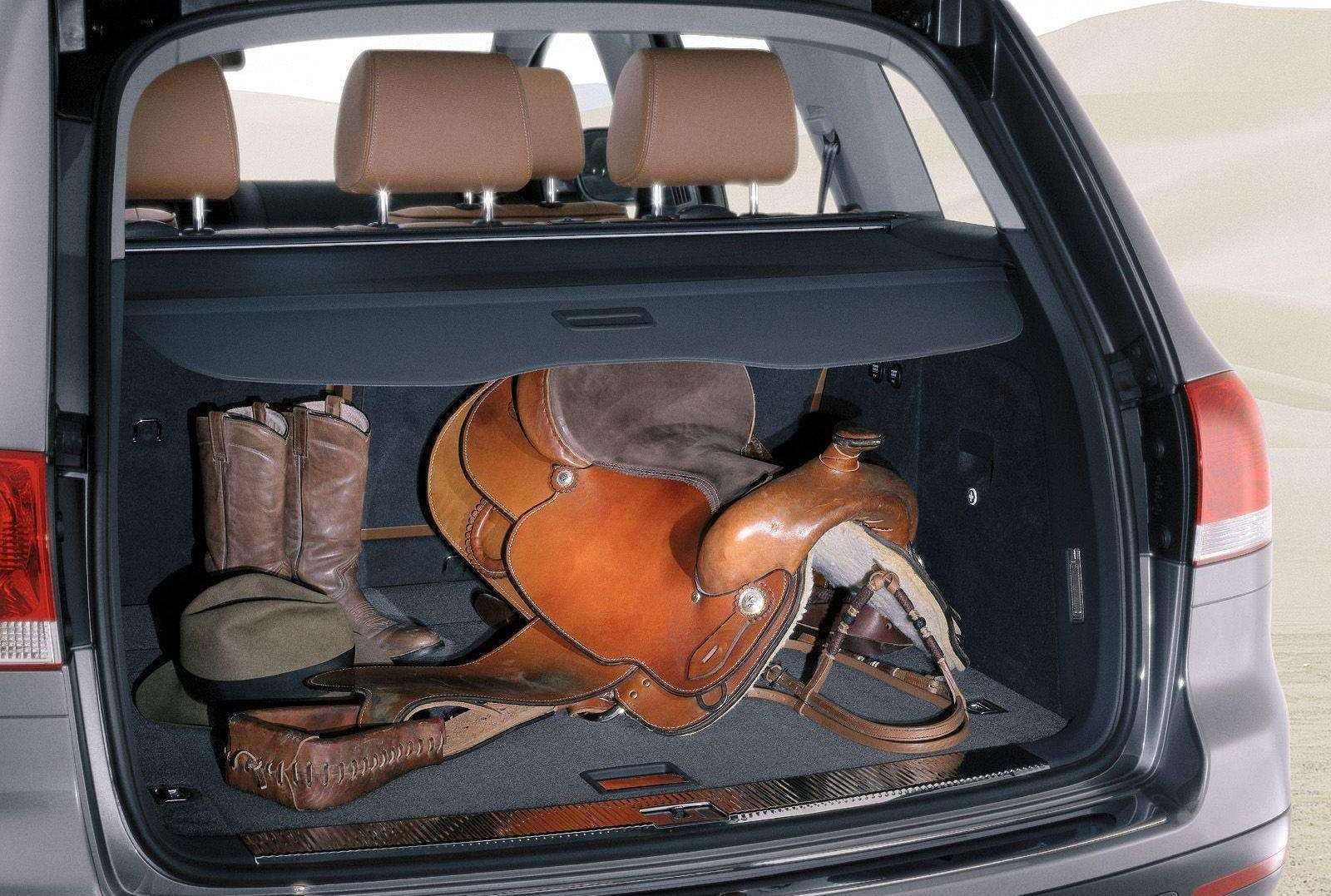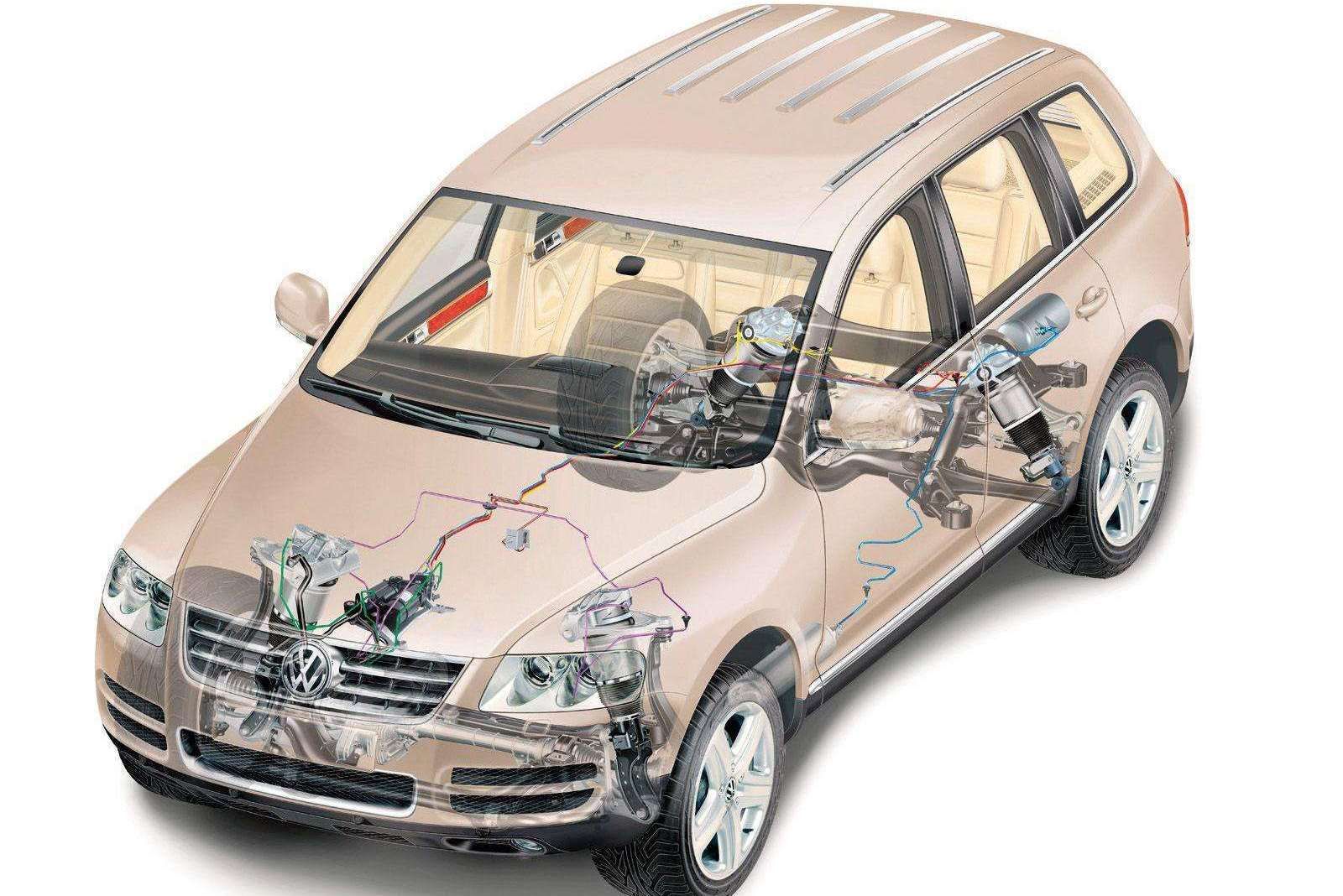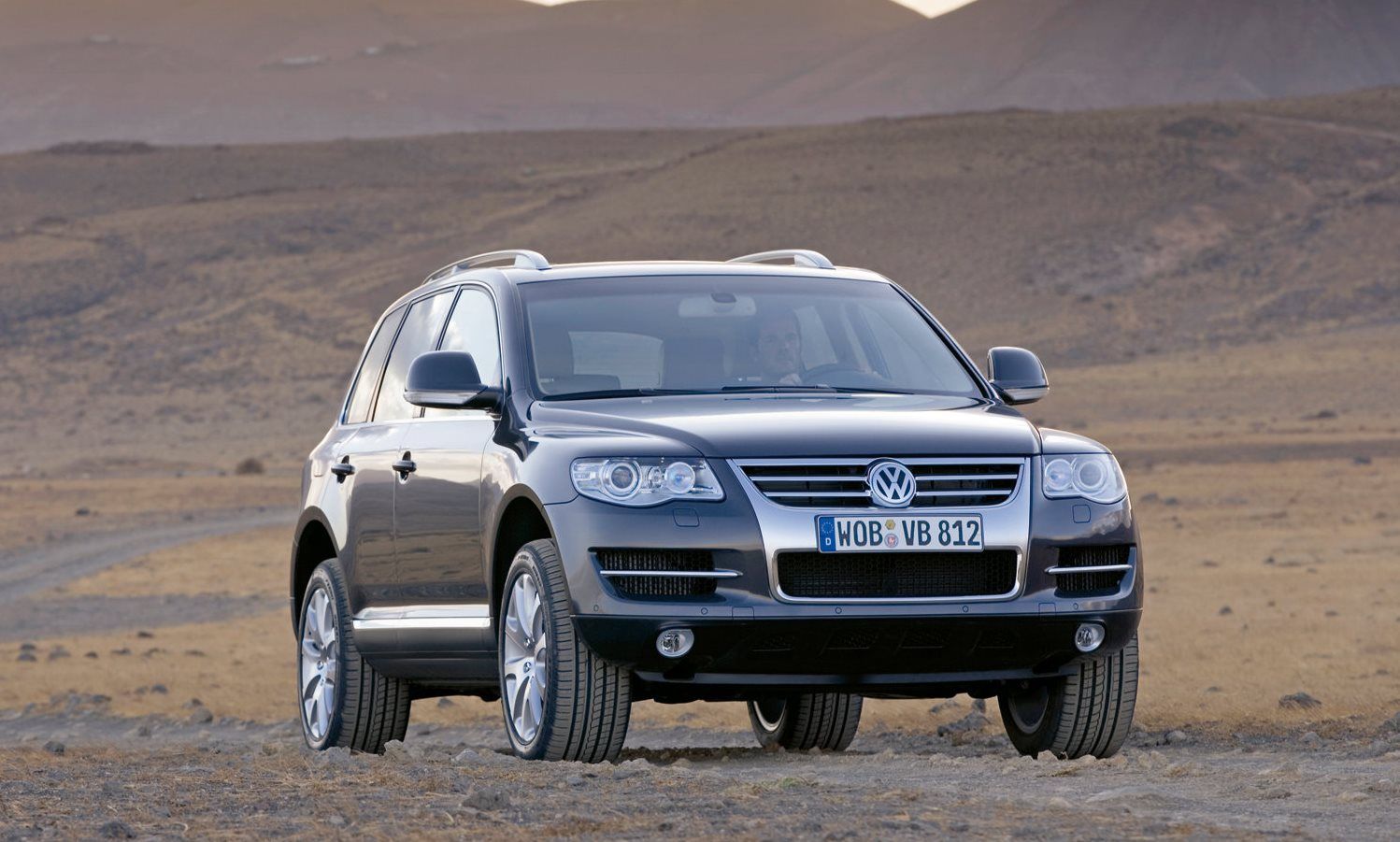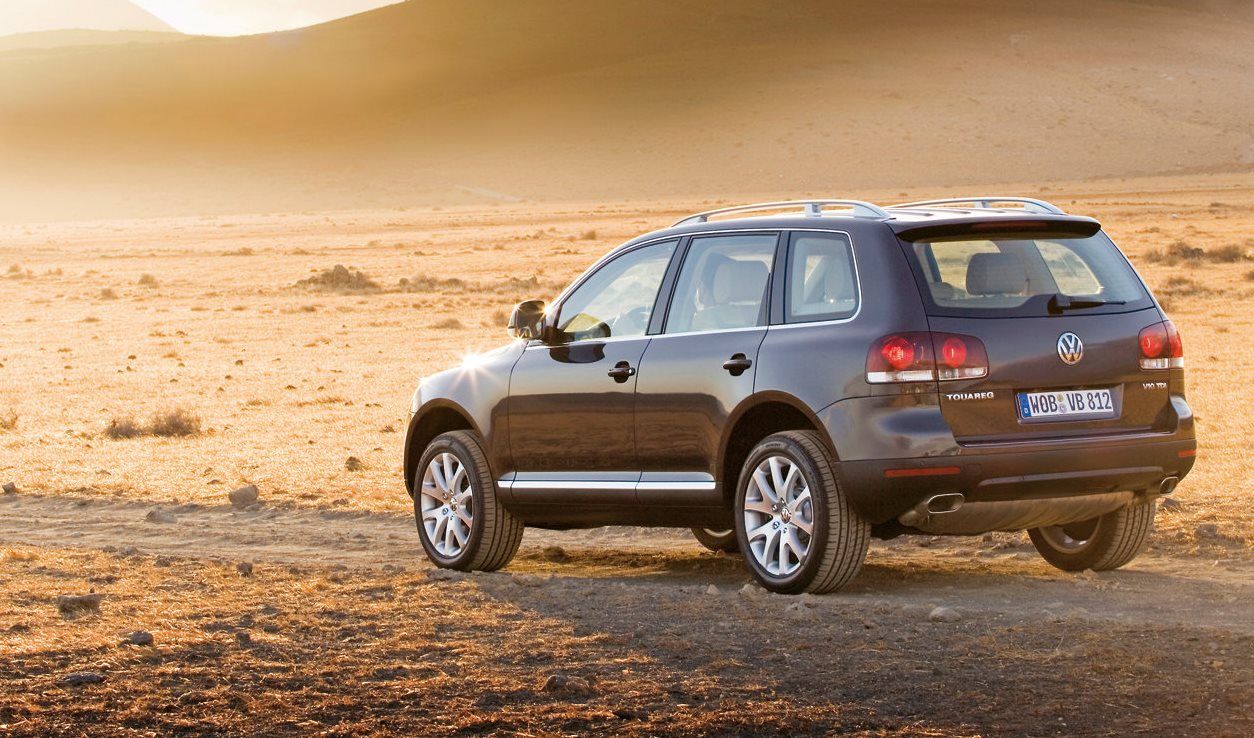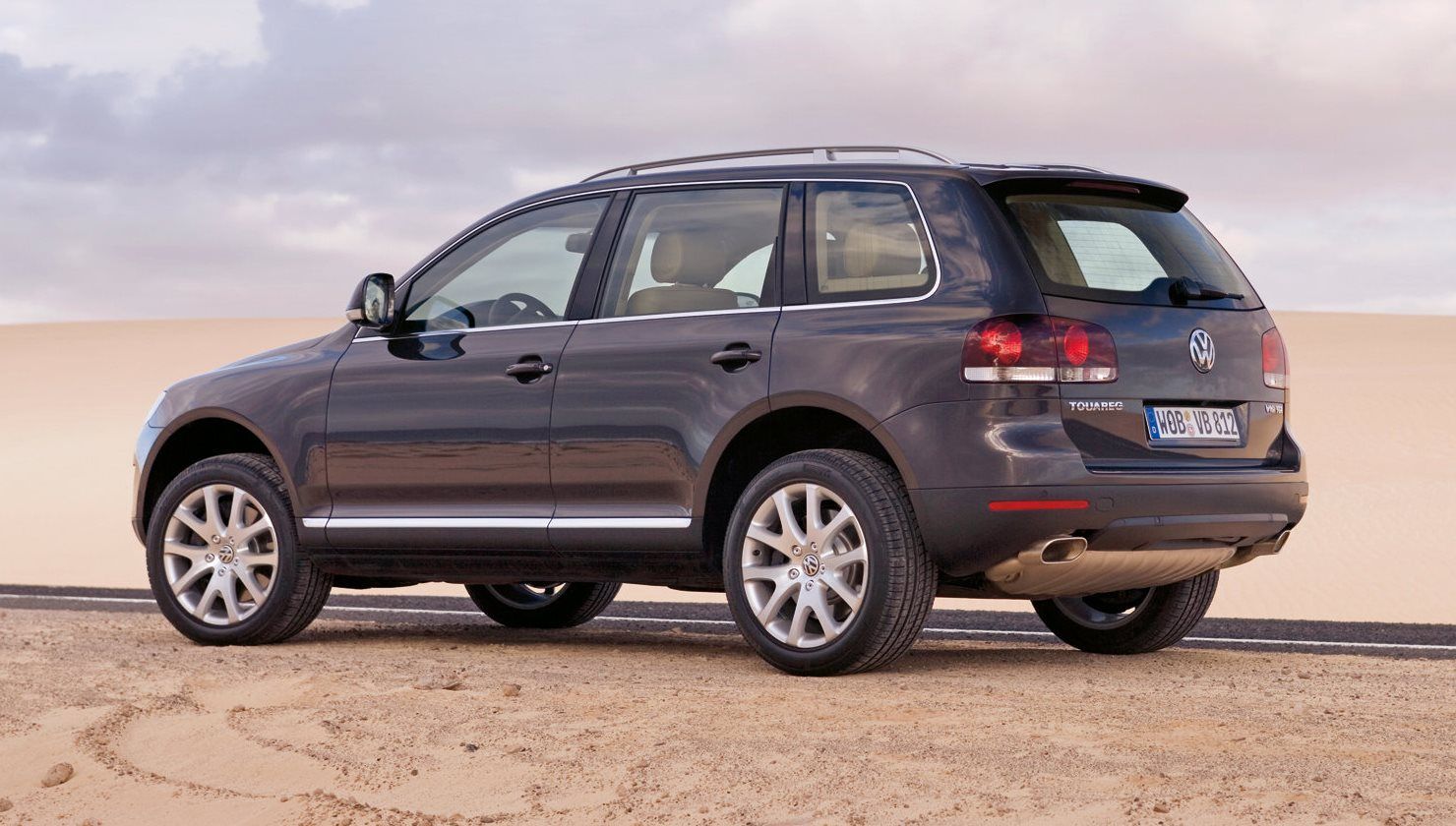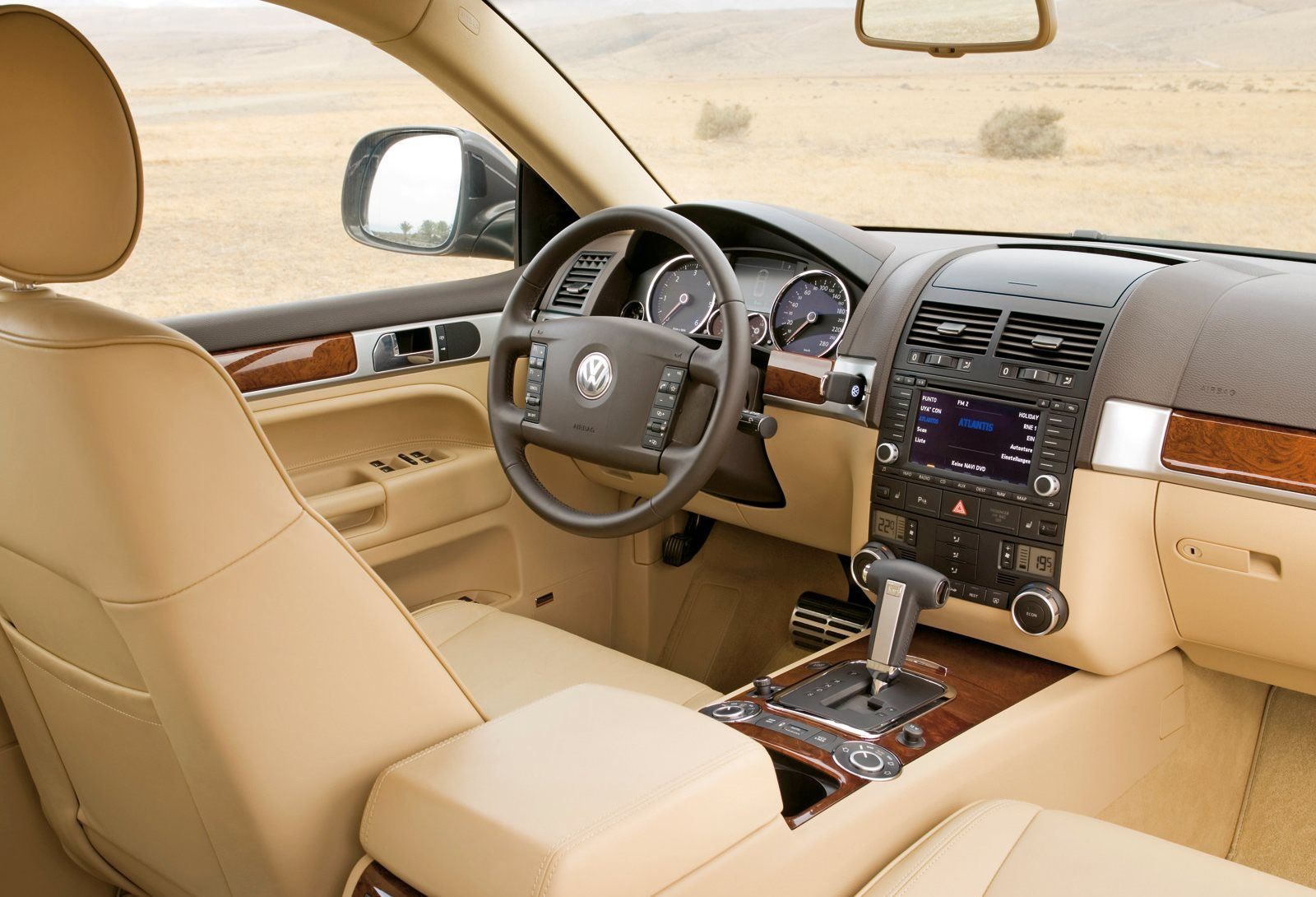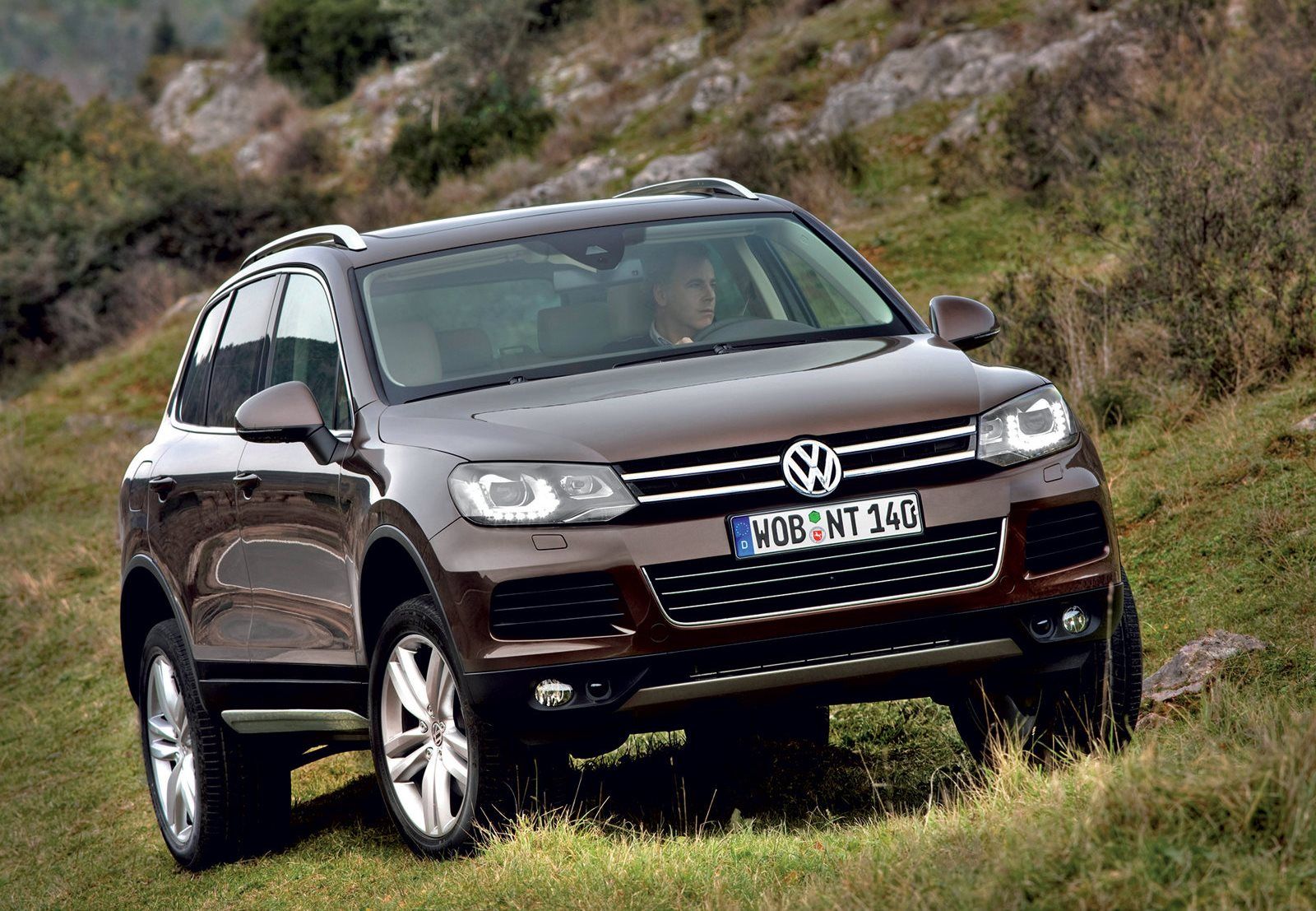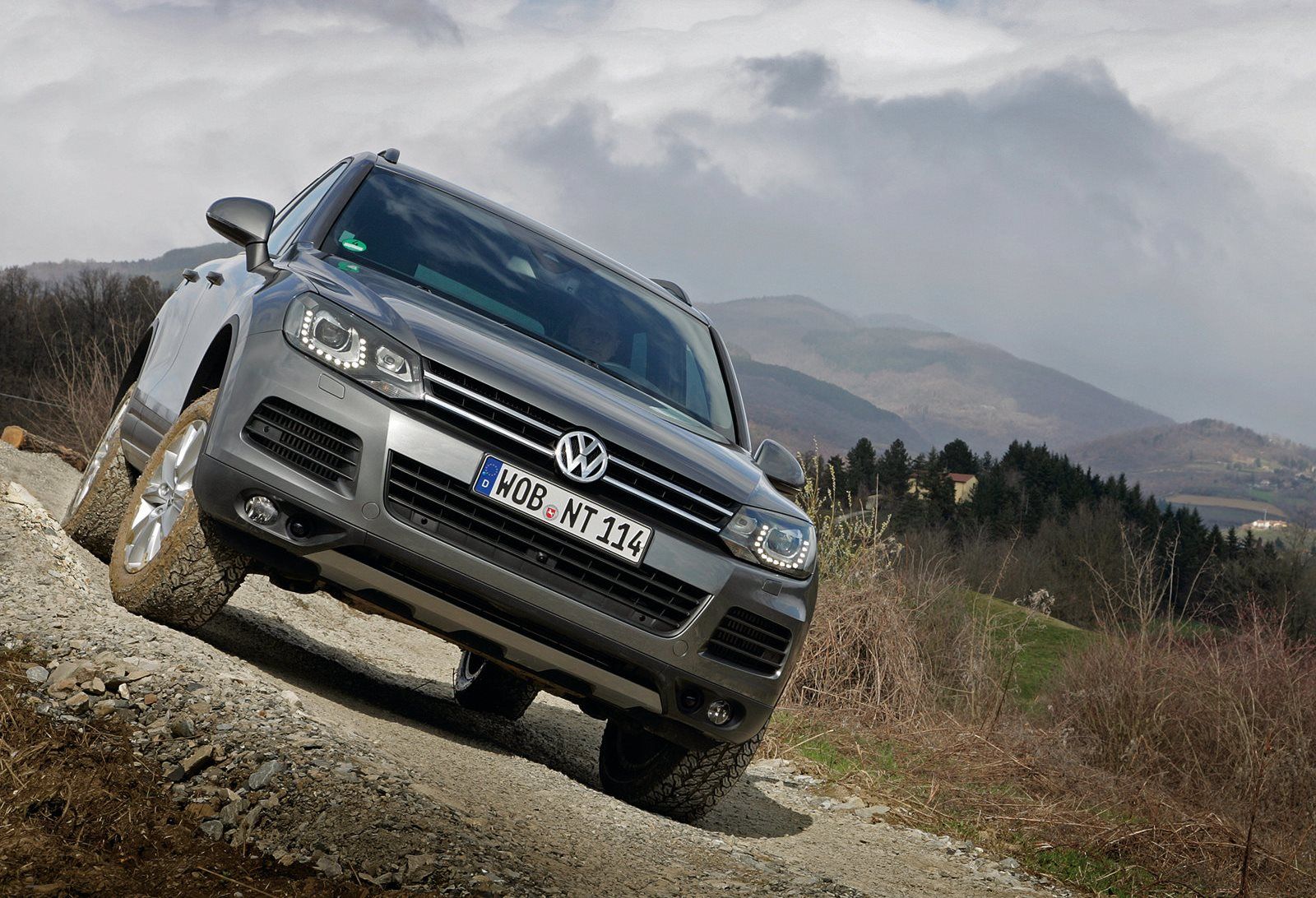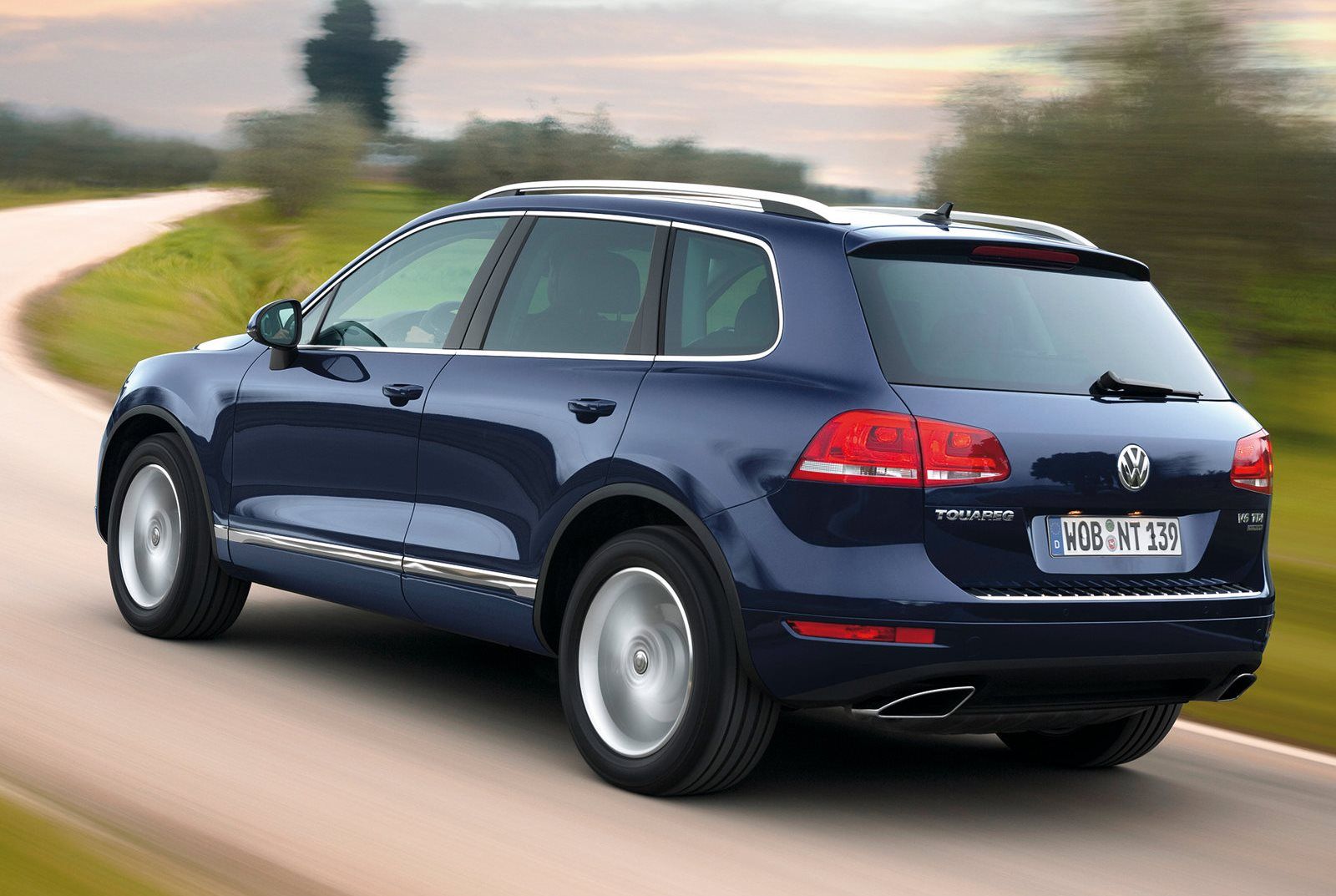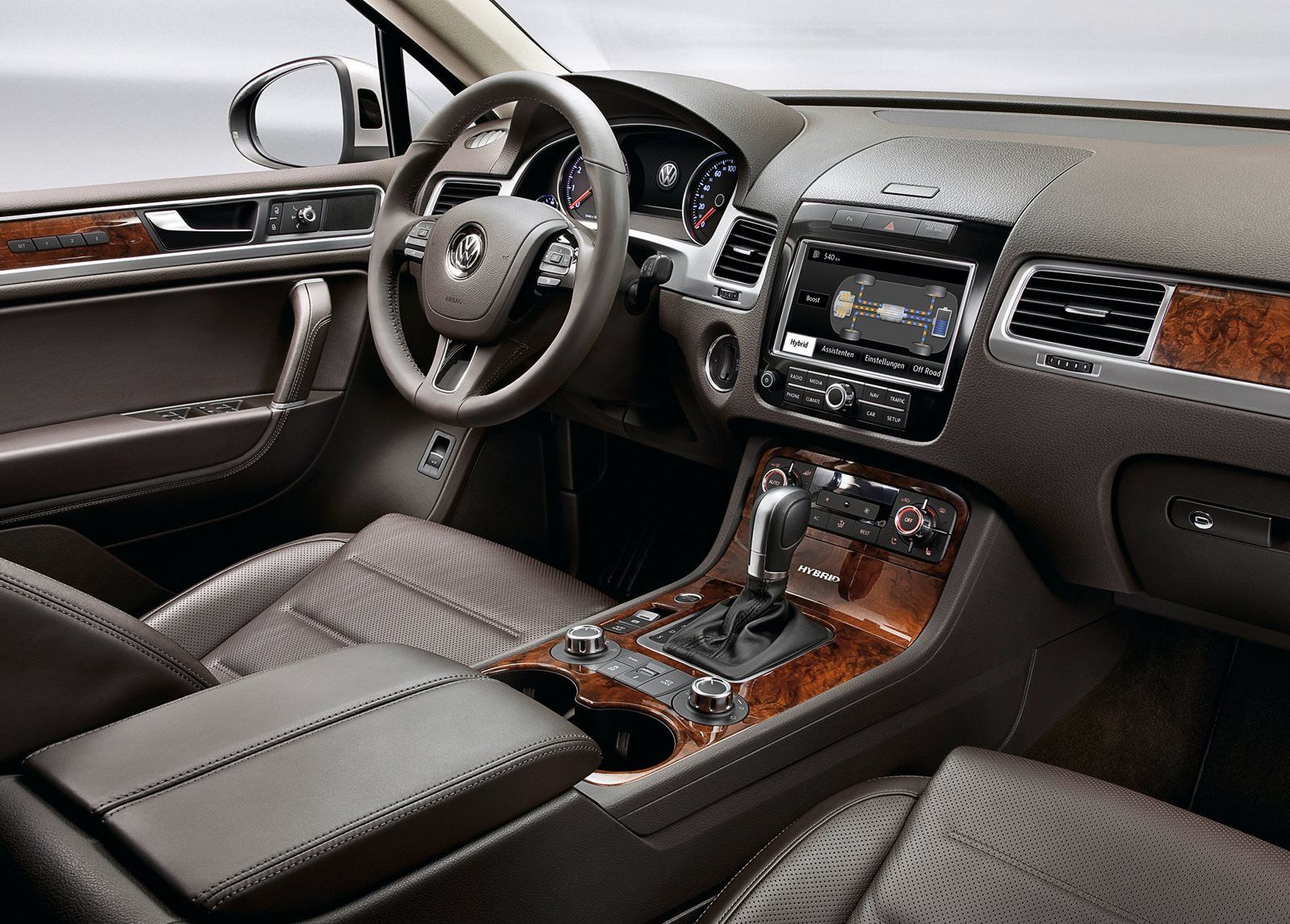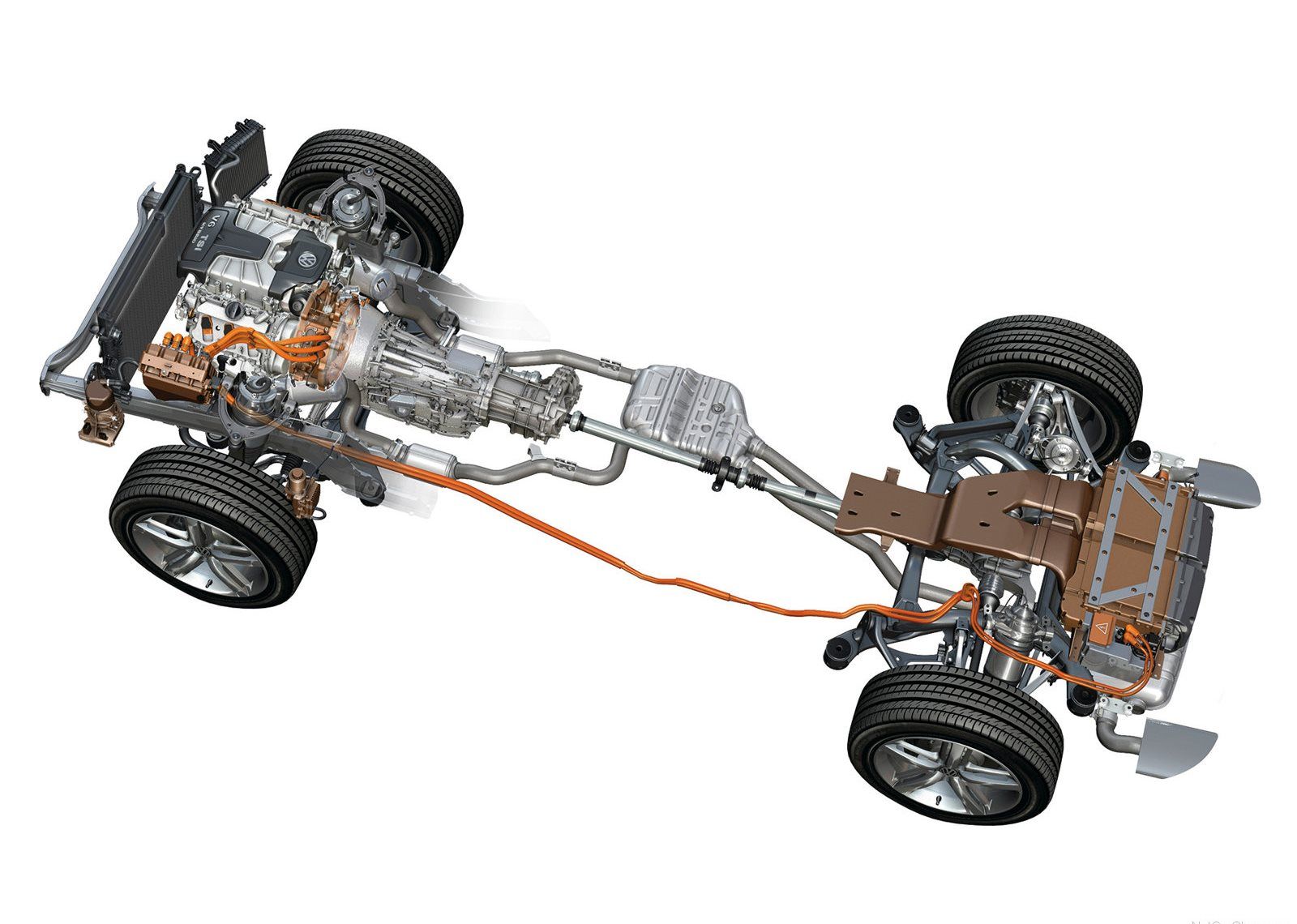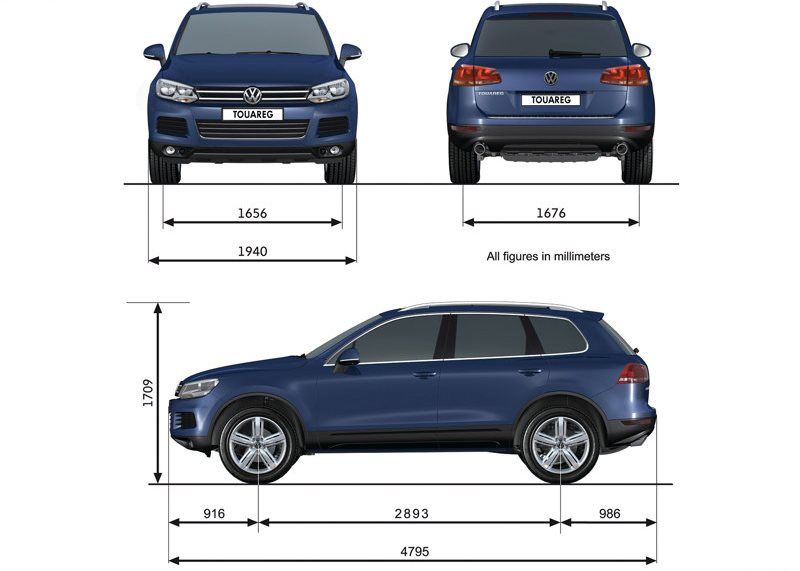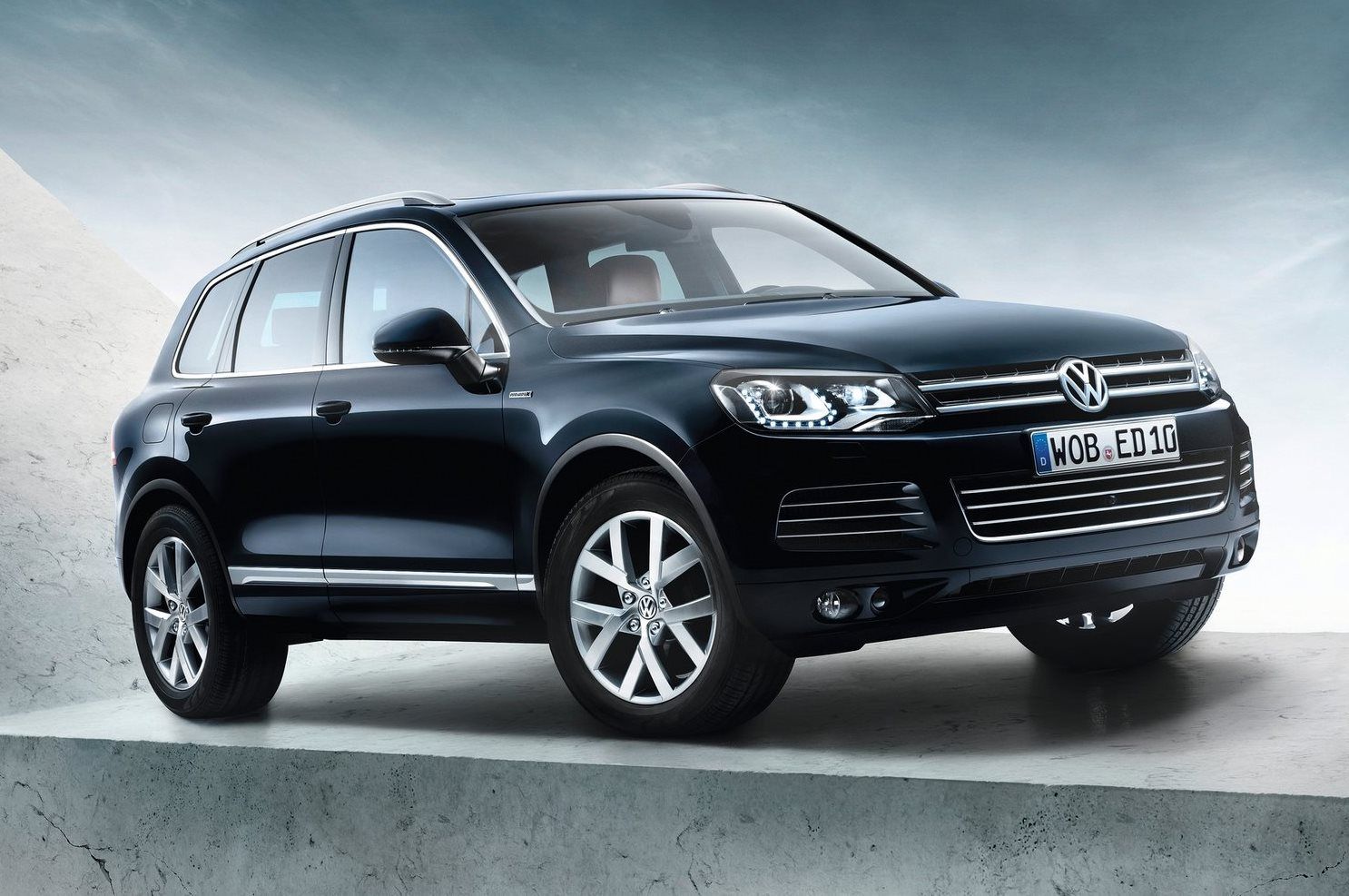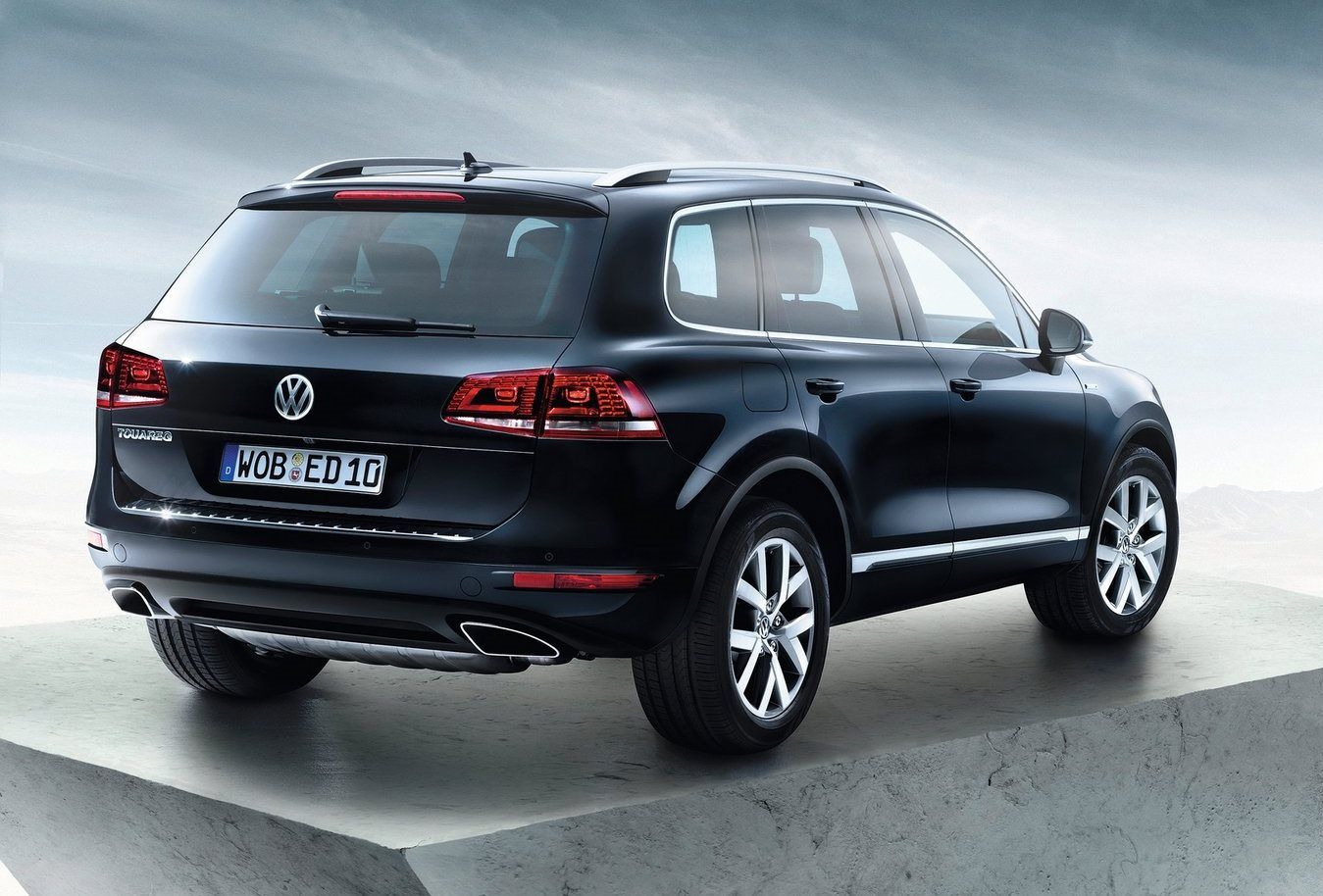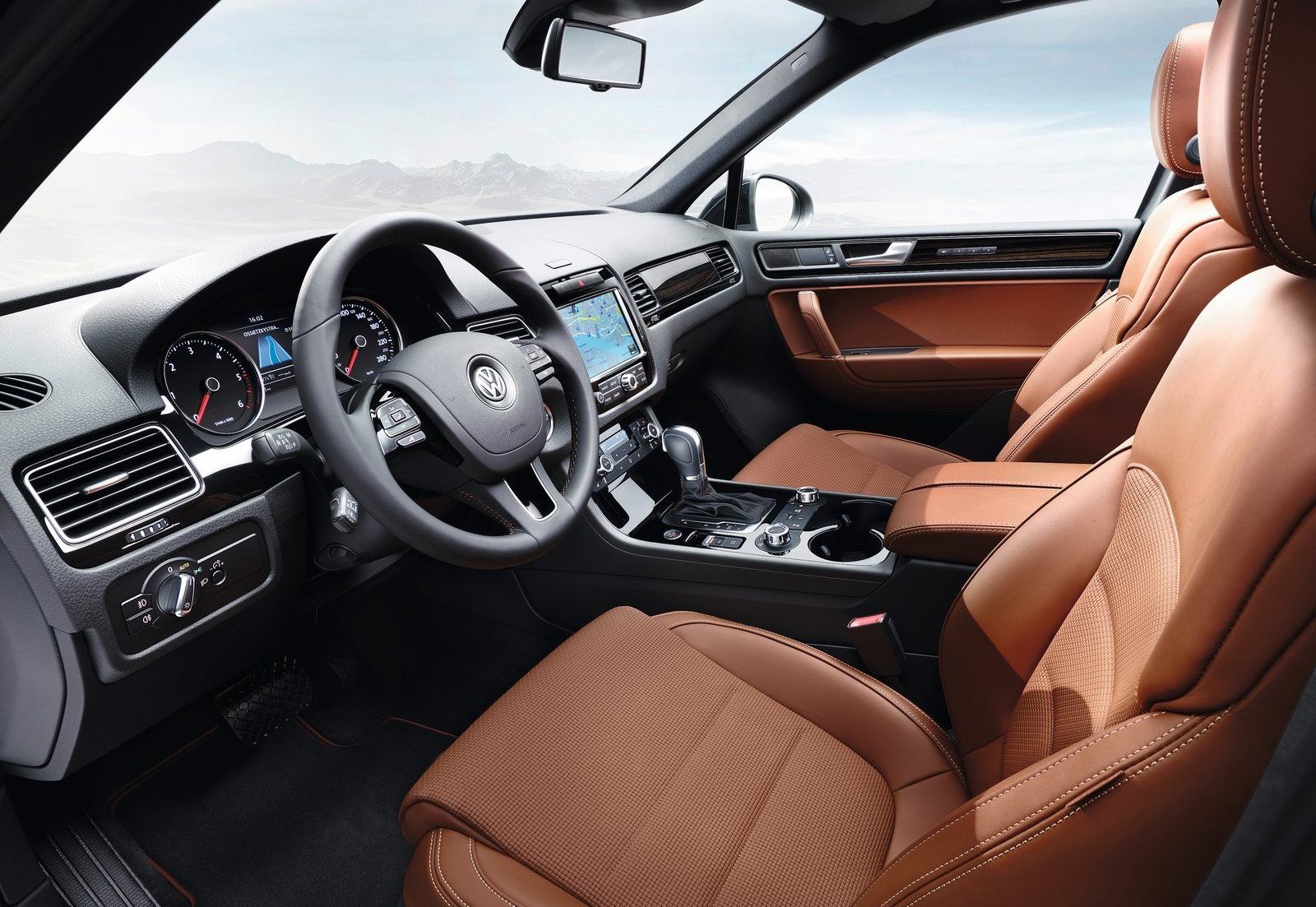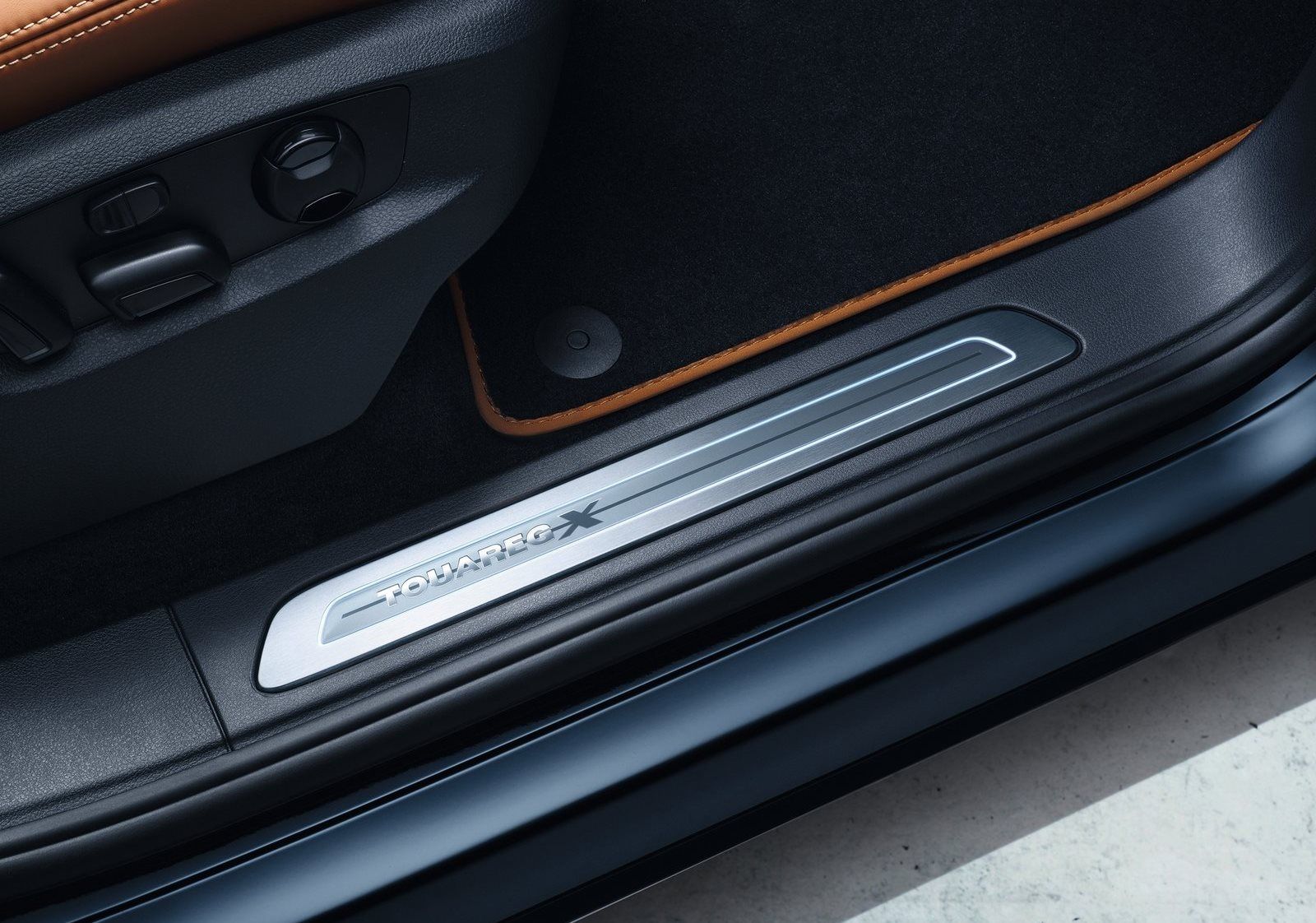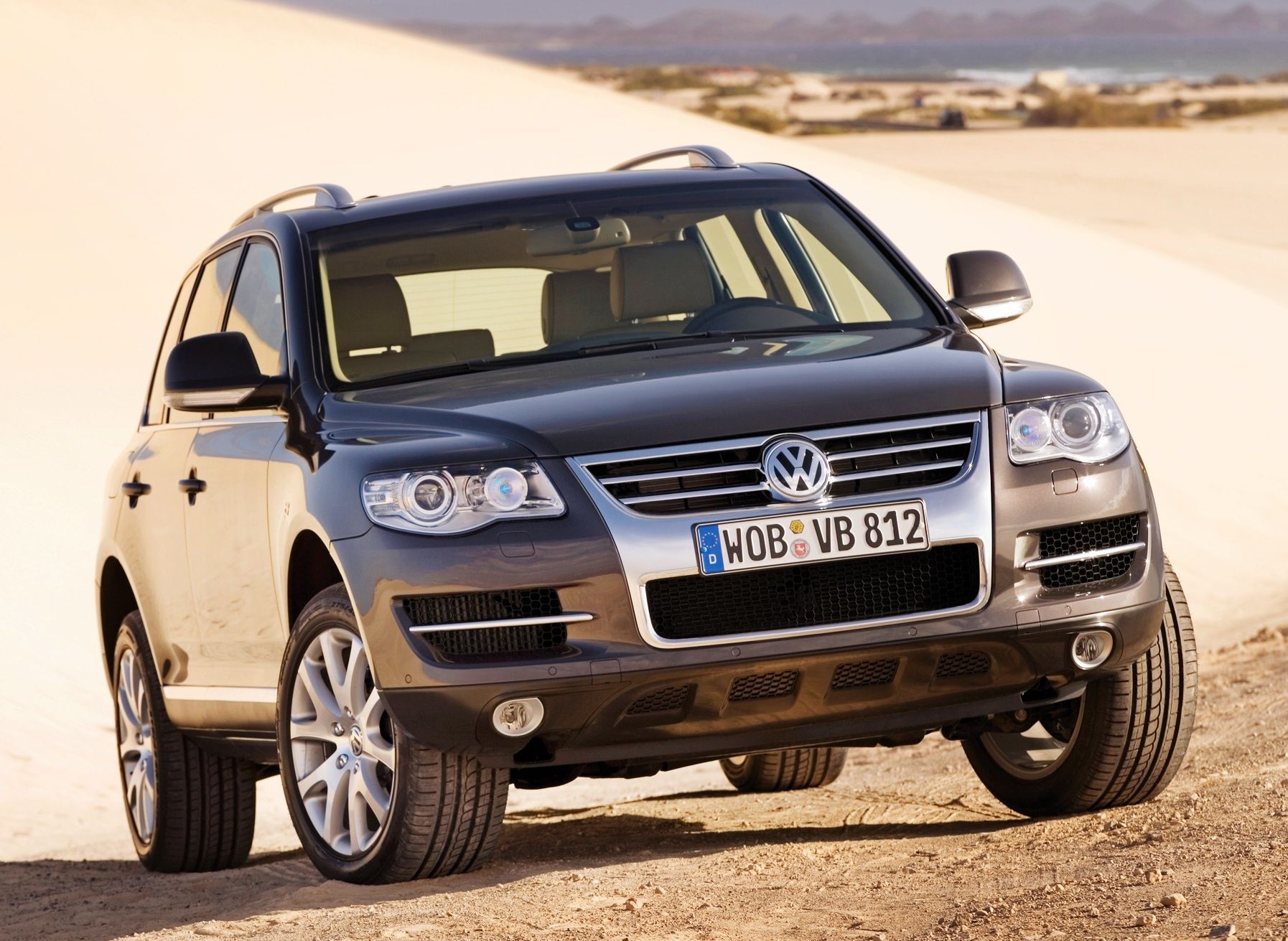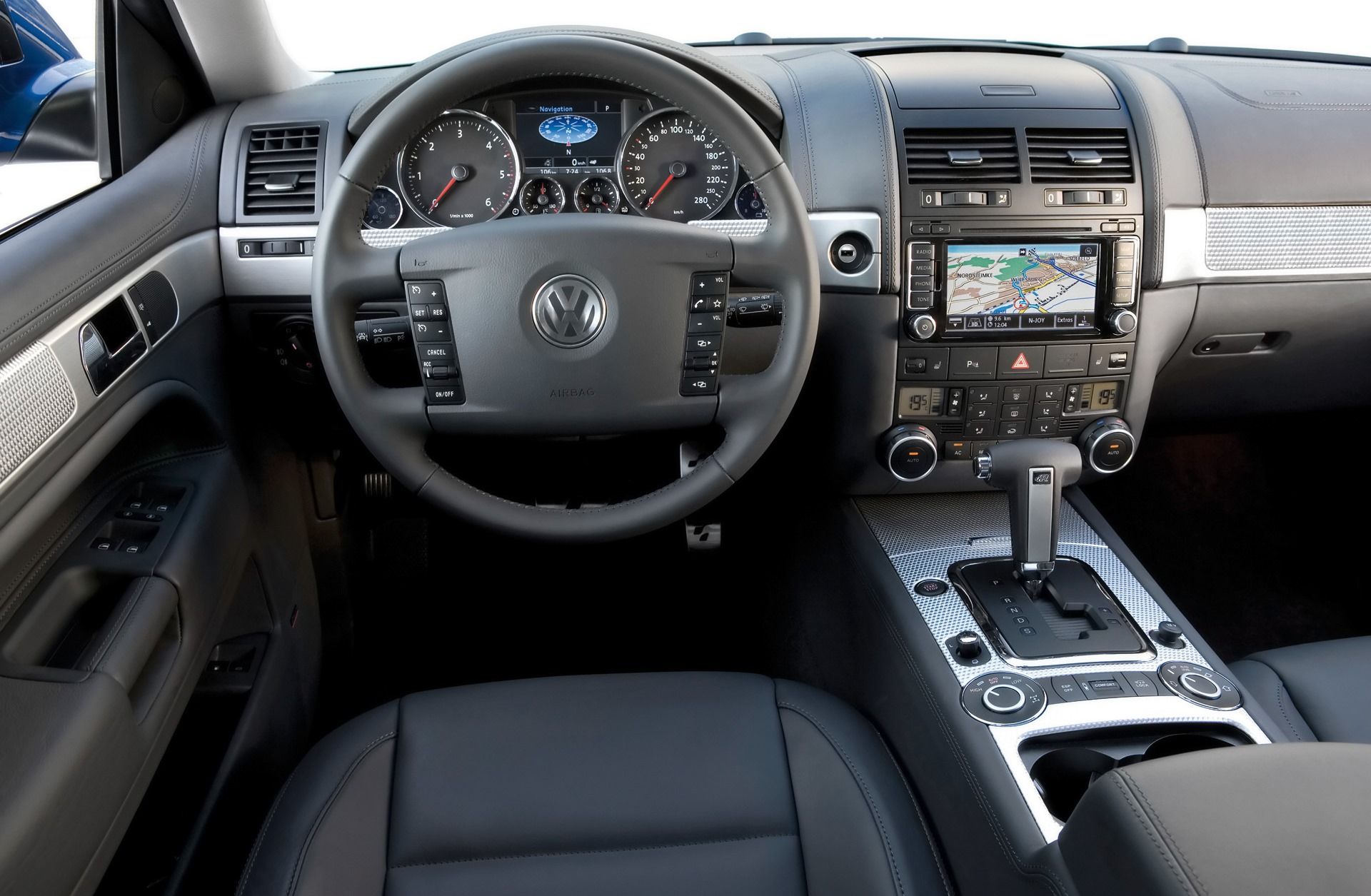On the eve of a new 2014 Touareg launch from Volkswagen later this year, here is a look back at the model's mechanical and style evolution during its 9-year run in the U.S. from 2004 through 2013 – between 2002 and 2004, it was available in other markets. No fewer than seven unique engines have powered this PL71-platform VW behemoth in production form. Even including its stable-mates the Porsche Cayenne->ke212 or Audi Q7->ke1083, no other SUV in the history of the automobile has packed more mechanical variations over a relatively short run.
From basic I-5 diesels to V-6s up to the monster V-10 TDI and W-12 gasoline engines and even a hybrid in the mix, the Touareg has been a true jack-of-all-trades and a phenomenal global success for the Volkswagen group. It is worth remembering that the platform development and manufacturing partnership between VW and Porsche had long been dead until this SUV project brought it back to life in 1999.
The first Porsche-VW baby of the new era was born a healthy, slightly pudgy infant with the Volkswagen Touareg. A name only a mother could pronounce, it is said as both “twa-reg” and/or “toar-reg.” If you don’t already know, the Toureg – the real ones, not the car – are a North African group of people that speak Berber.
Ostensibly a response to the success of the Mercedes-Benz ML->ke2901 series launched in 1998, the Touareg’s mission was to be all things to all buyers. The goal was complex: Range Rover->ke469 comfort, BMW 5-series->ke317 road-going abilities and G-Wagen->ke1712 strength when all paved roads turn to dirt.
Click past the jump to read about the evolution of the Volkswagen Touareg.
2004 - 2010 Volkswagen Touareg
- Make: Array
- Model: 2004 - 2010 Volkswagen Touareg
- Engine/Motor: W12
- Horsepower: 444
- Torque: 443
- Transmission: Six-speed Automatic
- [do not use] Vehicle Model: Array
First-gen 2004-2007 Volkswagen Touareg (T1)
Exterior: 2004-2007 Volkswagen Touareg (T1)
The first-gen Touareg launched with VW’s subtle and friendly styling themes of the period, namely the Phaeton and Passat->ke224-inspired round graphics for all its key surfaces and lighting elements. It’s a look that is instantly dated today by the unpainted lower bumper trims and some questionable colors dominating the lineup, including the ghastly royal blue (purple) and refrigerator white that VW was so fond of during the early 2000s.
The soft-shouldered style could barely contain the aggression underneath. Visibly chunkier with far more off-road prowess than the BMW X5->ke326 that debuted just before the VW, the cuddly exterior made the Touareg approachable as a family car in its key market: the SUV-mad United States.
Simple features were executed with the utmost style and class for the period, including projector beam headlamps under rounded plastic shrouds up front and a similar quartet of round stop lamps under blob-like red plastic housings out back.
There was a real passion for keeping the lines clean up front with no superfluous features. This resulted in the main front turn signal occupying the typical place of a high-beam just inside the assembly, but backed up by then-new mirror-mounted blinker repeaters. Classy details abounded, like the complex and expensive-looking front bumper area and the shimmery silver roof rack.
The aesthetic must have been a personal preference of VW board chairman Ferdinand Peich, as it also appears on the Bugatti Veyron->ke1112 still today.
Exterior Facelift: 2008-2010 (T2)
The lightest of light facelifts was carried out for the 2008 model year on the “Touareg 2,” as it was called, incorporating the deep-shield grille in striking chrome that now extended down into the front bumper area.
The new Touareg also included wider and more stylized air intakes in the front bumper, but kept the black-trimmed lower sill edge for the fog lamps and around the whole car. Part visual trickery, part scruff-proof sealcoat, the black trims reinforced the Touareg’s off-road credentials but hurt its image noticeably versus the painted trim on the Cayenne->ke212 and Q7->ke1083.
The other key exterior tweak was to the headlight graphic, which now bulged out just below the main projector headlamp. The tweaks didn’t revolutionize the Touareg but helped energize sales among fashion shoppers and also kept the Touareg from looking like a purple 1998 Passat in the corner of VW showrooms full of 2008 models.
The 2009 model dropped the “2“ from its name to become simply the Touareg again. A product placement deal saw Jason Bourne using a black Touareg during a high-octane chase around New York in the Born Ultimatum film.
The face-lifted Touareg also become a darling of the customization and car tuners, who liked to apply lurid wide-body kits, suspension drops and other misguided attempts to put themselves on the map. The influx of design mods is evidence of market boredom with the OEM Touareg’s utilitarian appearance.
The endurance rallying Race-Touareg 2 appeared in 2006 and competed until 2009, successfully launching the VW brand into motorsport activities for the first time in decades.
Interior: 2004-2010 (T1 and T2)
The interior of the Touareg leaned heavily on the brand’s other flagship luxury car, the Phaeton limo, for styling direction as well as premium woods, plastics and leathers. Upon first climbing up into the cabin – which has a high floor and step-in height – the first impression is of the sheer width and scale of the thing.
A massive, Hummer H1-esque center console divided driver and passenger with at least a foot of room between shoulders. Big rectangular slabs of wood increase the sense of quality and but cannot hide some of the cheap-looking door panel bits and an abundance of tiny pieces around the cabin.
The center stack stood proud of the dash like a vertical cliff housing the in-dash nav screen, audio controls and climate controls toward the bottom. The dash-top is nasty scratch plastic, despite the Touareg’s very high price, but the view was second to none.
The relatively upright windshield and front pillars bring the hood corners right into view and are the exact opposite of the mini-van technique of a three-foot dashboard and sloped windshield. Versus the Mercedes Galendewagen->ke1712 it still felt new-school, but was vastly more off-road-visibility oriented than the BMW X5->ke326.
The final elements that really cement this car as an early-2000s VW luxury car are the rectangular four-spoke steering wheel and T-bar gear selector that seem unnecessarily serious about the tasks ahead. This chunky block design continues to offend Bentley and Phaeton drivers today, only recently giving up top billing in the Bentley Continental GT to the brand’s sportier three-spoke SuperSports wheel. These details are evidence of how closely related the Touareg, Phaeton and Bentley Continental range really are underneath.
Electronic gremlins inside the VW are known to cause high-dollar frustration among first-gen Touareg owners. Sharing few components with any volume VWs, replacement prices for the failure-prone display screens are particularly eye-watering.
Drivetrain: 2004-2010 (T1 and T2)
This first Touareg includes all the latest mechanic and electronic wizardry to topple the G-Wagen->ke1712 and Range Rover off-road. Mechanical diff locks, adjustable-height suspension and a dedicated 4-Low range helps ensure the VW could soldier on in rough terrain.
The extra-hardcore mechanical package had a weak link in the chain though: the standard 3.2-liter V-6 that powered most Touaregs until being replaced with a higher-powered 3.6-liter the year it hit U.S. showrooms. Two optional engines made up for the V-6’s lack of torque: a 4.2-liter V-8 and 5.0-liter V-10 TDI, both offered until through the refresh in 2007.
The gasoline 4.2-liter V-8 was long the top engine for volume Touaregs in the United States following some emissions hurdles with the big V-10 until it became 50-state smog compliant in 2006. All engines needed to be worked hard to move the very-heavy vehicle and the resulting low-teens mileage was appalling in real-life traffic. Thankfully, a jumbo gas tank meant fewer fuel stops.
Limited-run diesels, like the posh R50 V-10 and the 3.0-liter V-6 TDI, made brief appearances on option lists. The V-6 TDI offered far better dynamics than the V-10 as well as better efficiency stats. Sold from 2006, the V6 TDI delivered almost all of the big V-10’s benefits in a cheaper package via 369 pound-feet of torque and a respectable 8.3-second 0-to-60 mph time that was only slightly slower than the 7.7-second time from the 10-cylinder TDI model.
Honorable mention to the 2.5-liter in-line-five diesel, which served in some markets between 2003 and 2010, as the base diesel model. This engine is an old Pump Duse style of injection with none of the power or quiet running of the later clean diesel V-6 models.
All models from 2006 ran six-speed manuals or automatics, the standard transmission for the U.S. market. This was innovative during a time when even top BMW and Mercedes sedans ran only five-speed auto boxes.
Conclusion
The Touareg is still an extremely tough and capable automobile more than capable enough to shame almost all other SUVs in rough terrain. As geopolitical drama means namesake North African nomadic “tuareg” tribes become increasingly hostile and militant, the intentional misspelling of the name seems prescient.
Ultimately, the Porsche-led development of the original Touareg platform achieved two of its goals at the expense of the third.
Off-road ability? Check. Supremely comfortable and luxurious cabin? Check. Sedan-like highway dynamics? Check... back after the Frankfurt show in September for the lighter and nimbler 2014 Touareg “T4.”
For people even more focused on seven-passenger crossover SUVs, VW is preparing a soft-roader based on the U.S.-market Passat. It will be more efficient and far cheaper thanks to VW's new factory in Tennessee.
Among the loyal fans of the current model traits, the VW Touareg legend continues with next year's new model.
Image Credit: ClubTouareg Member Army_Tanker19K's Images

